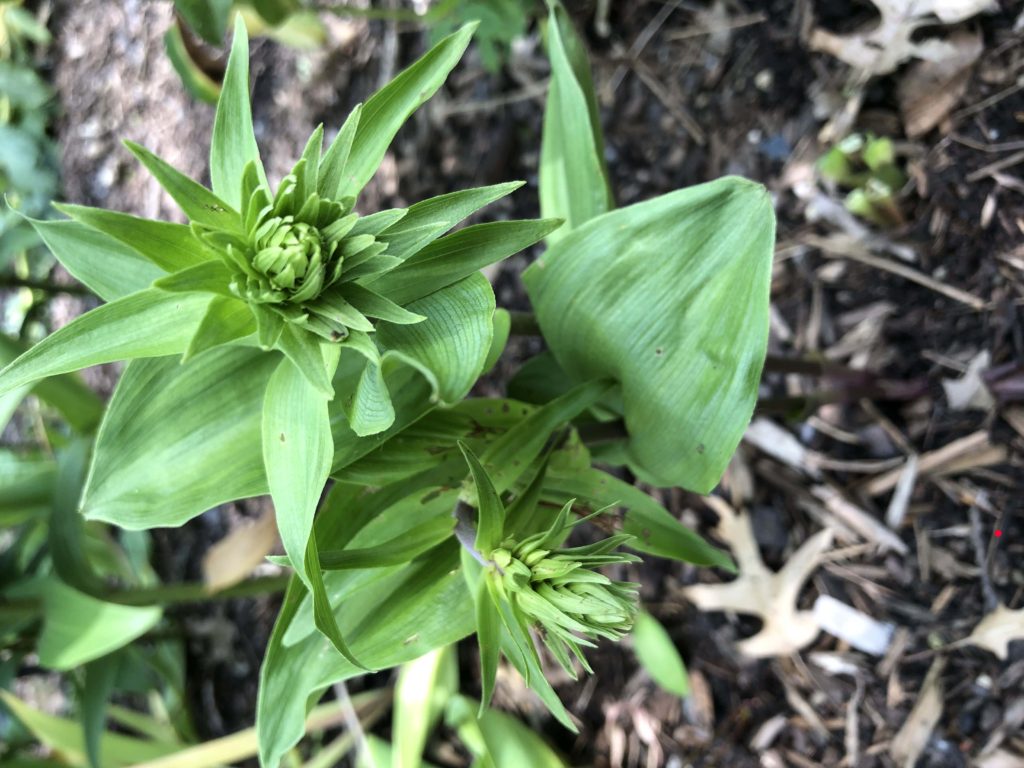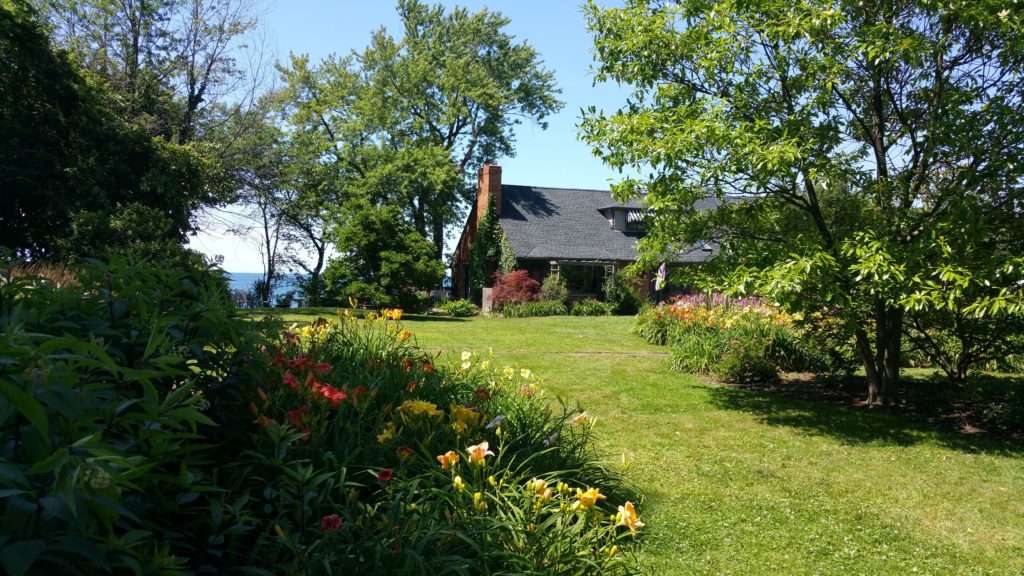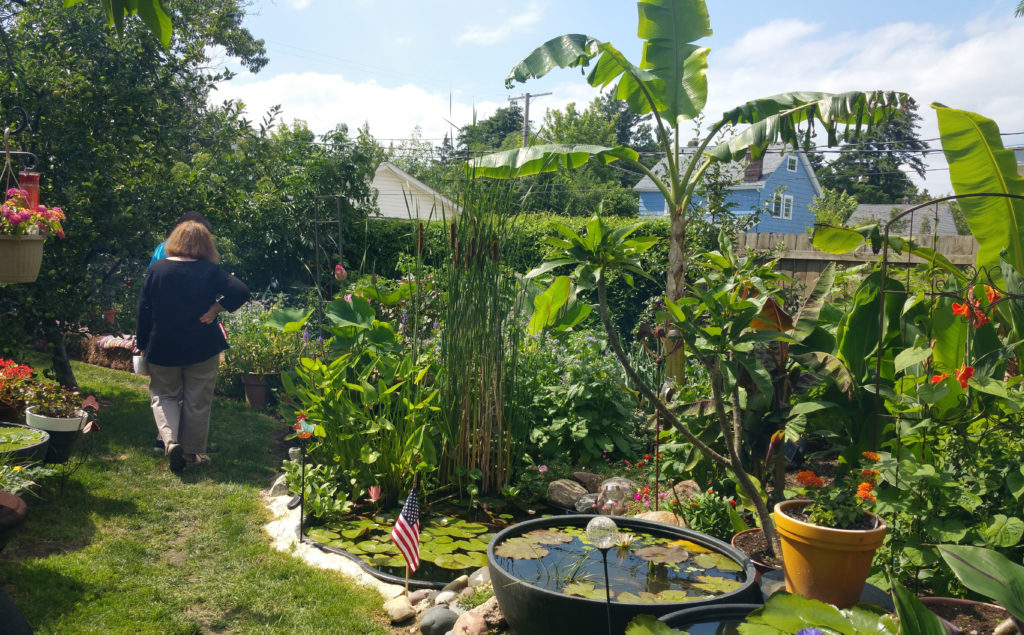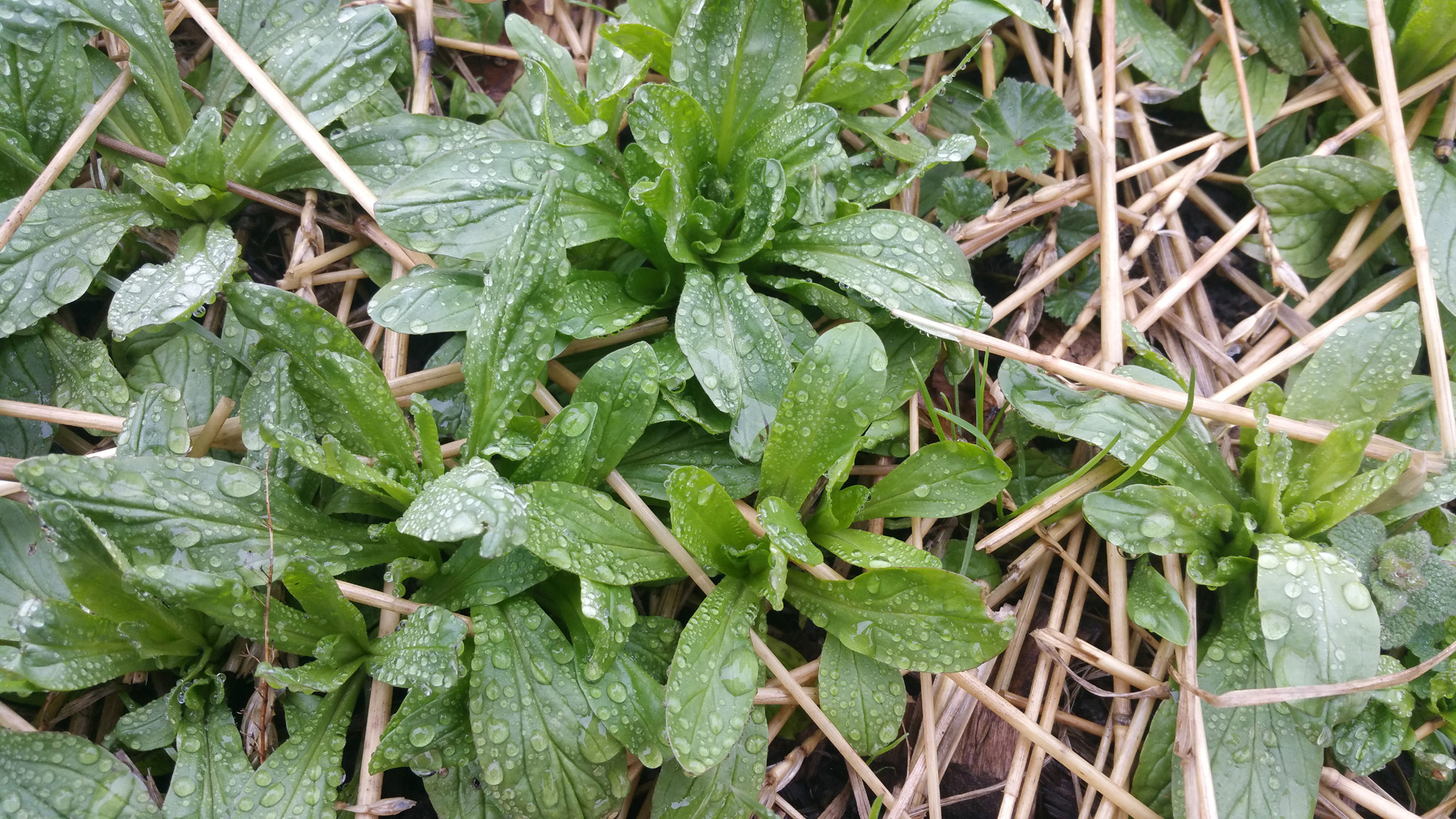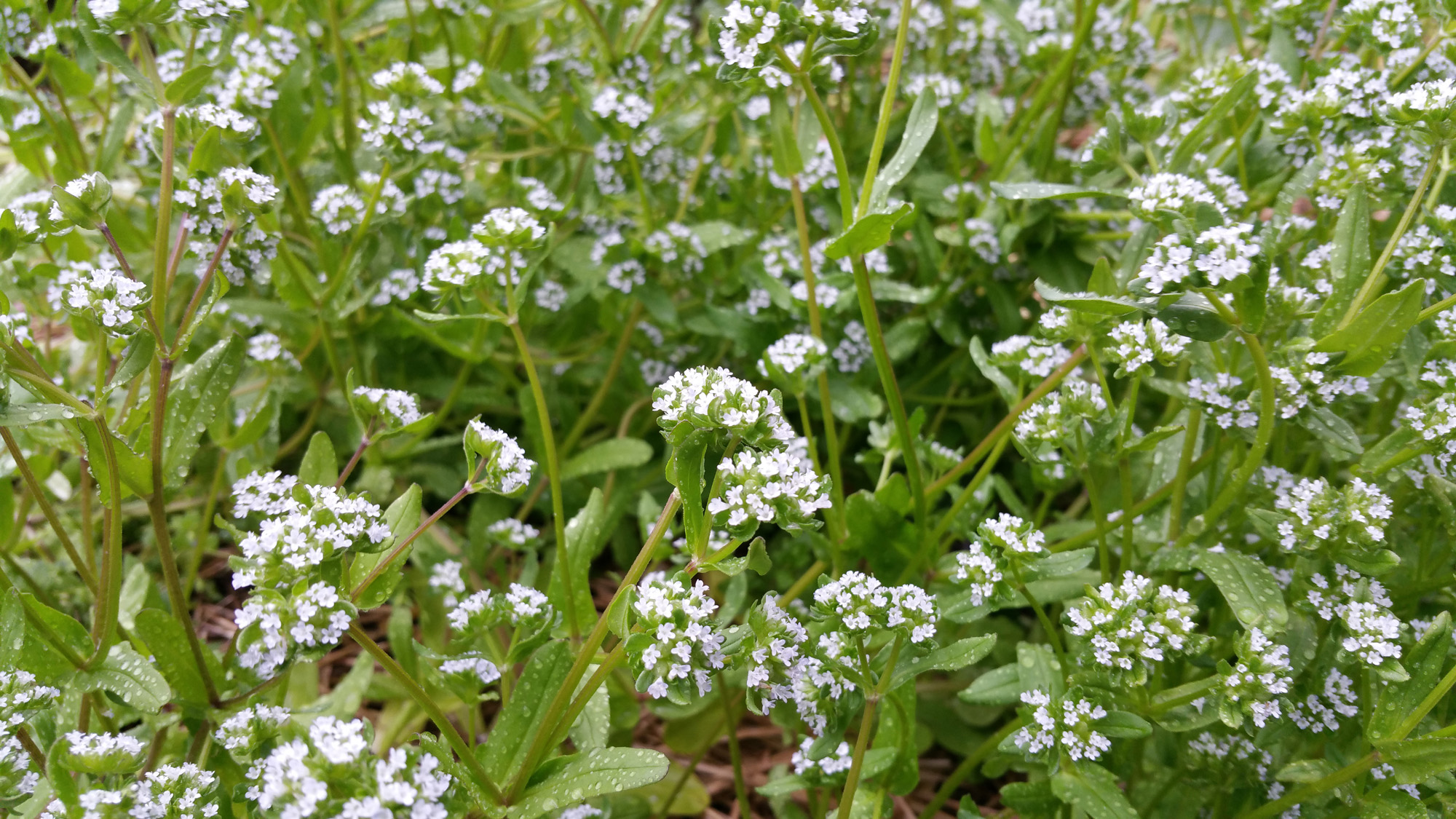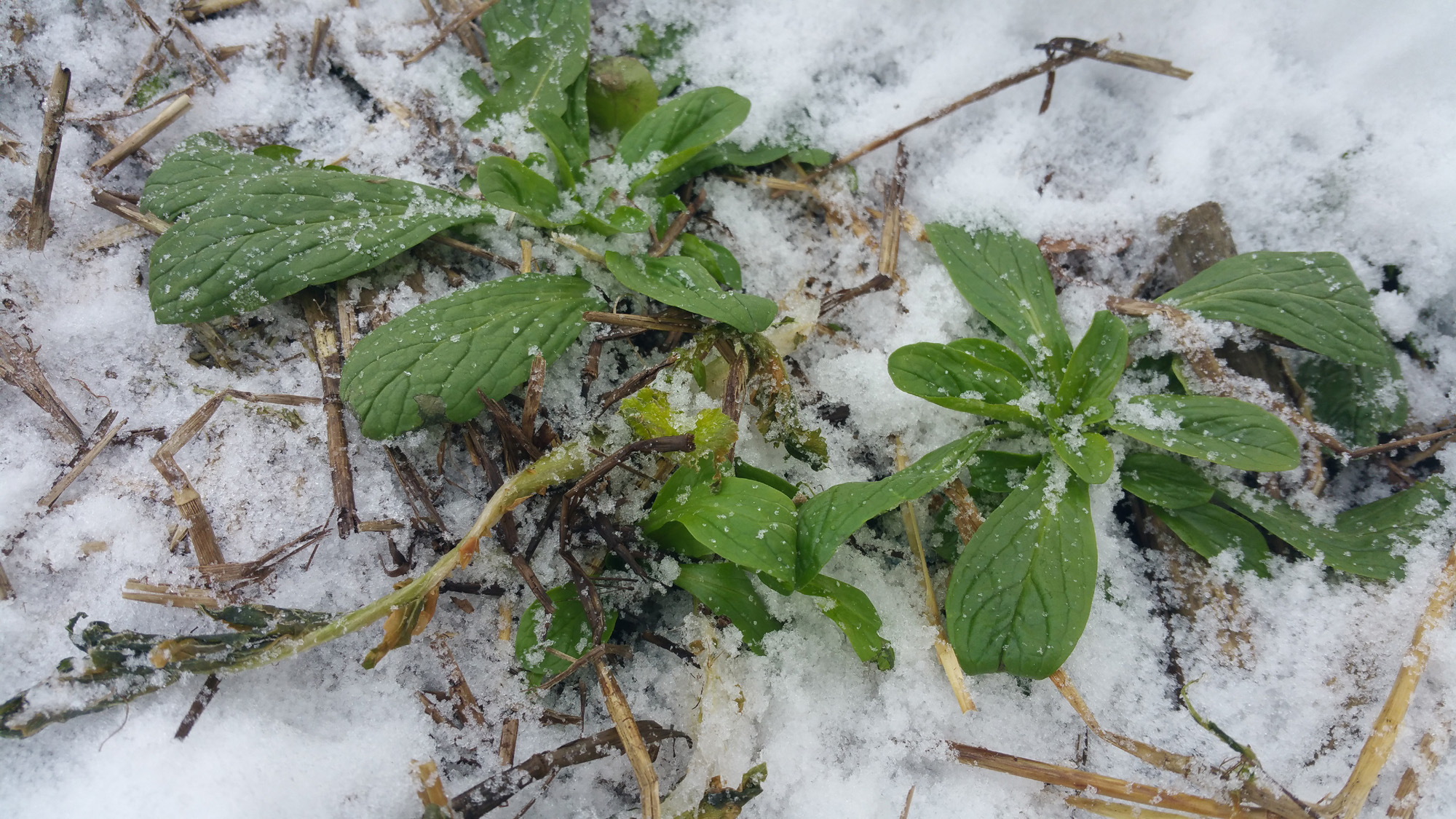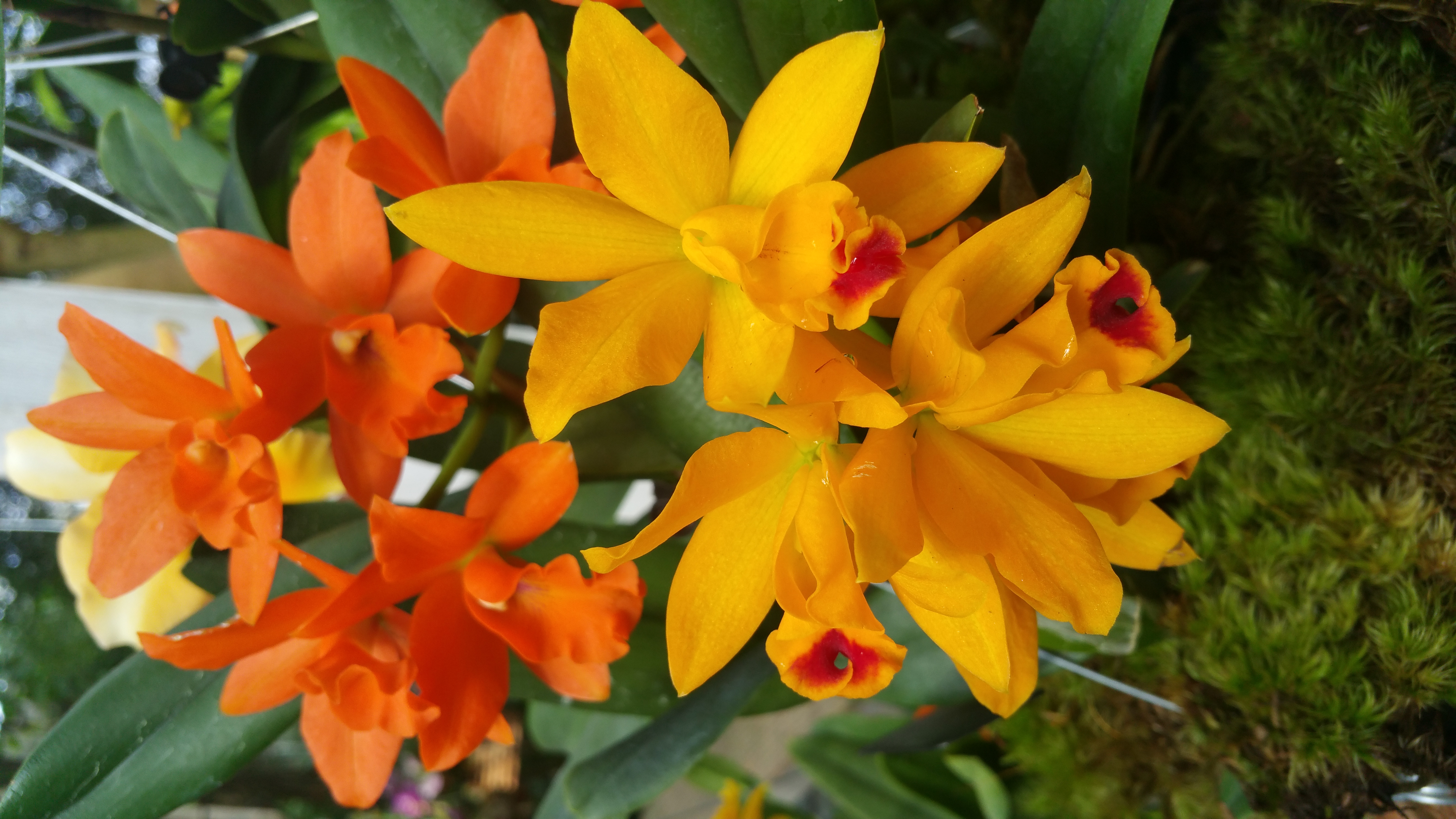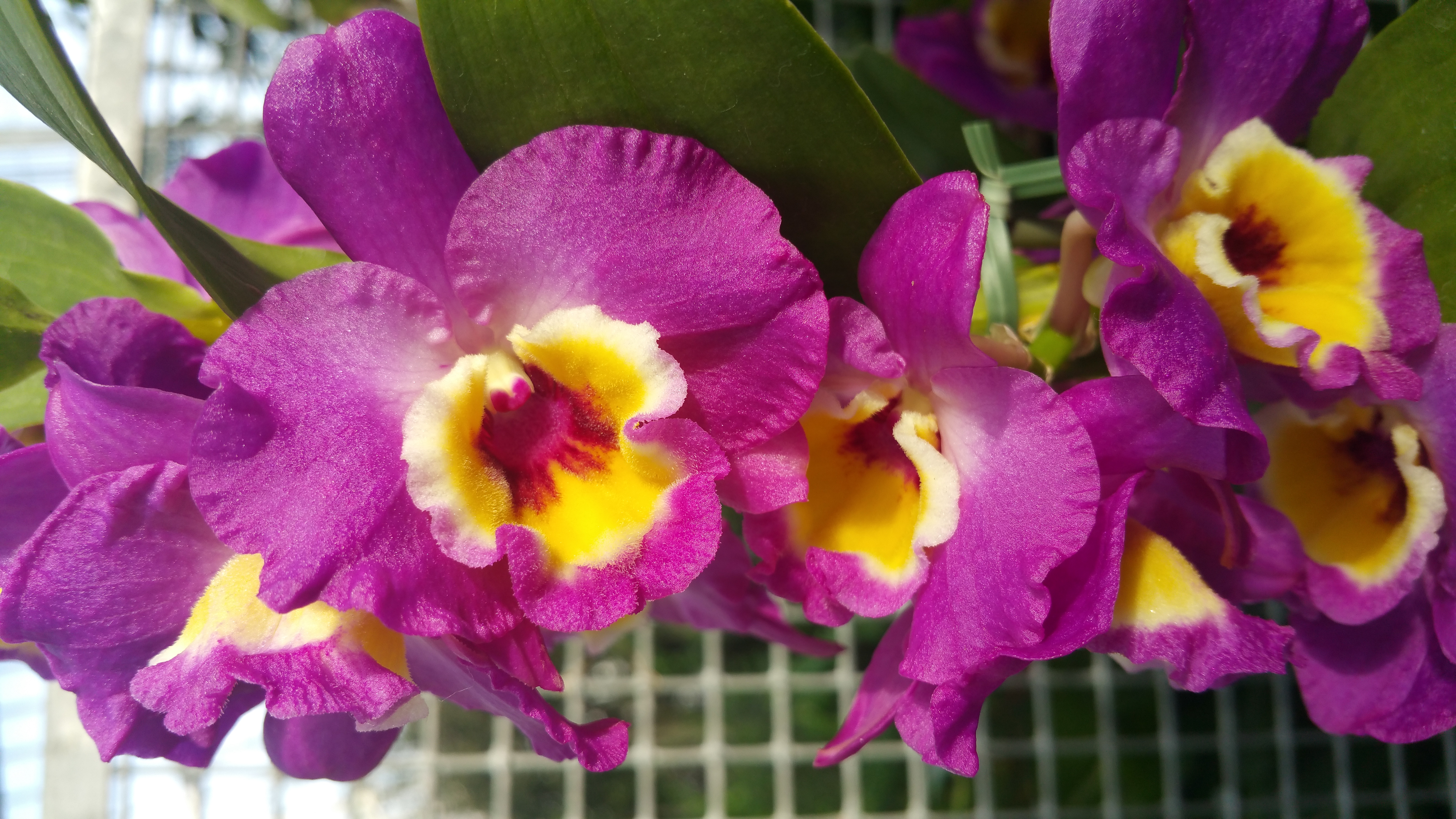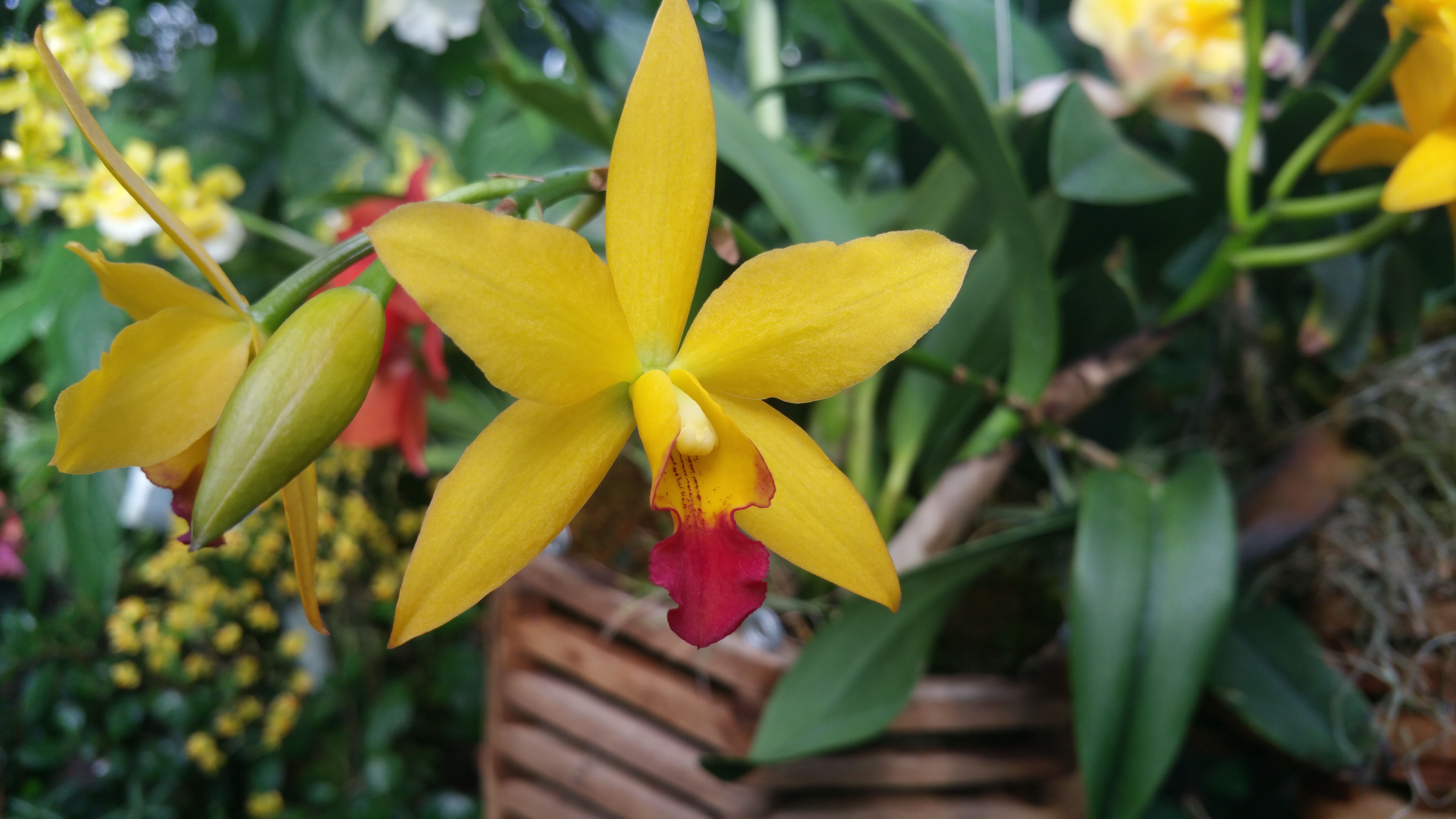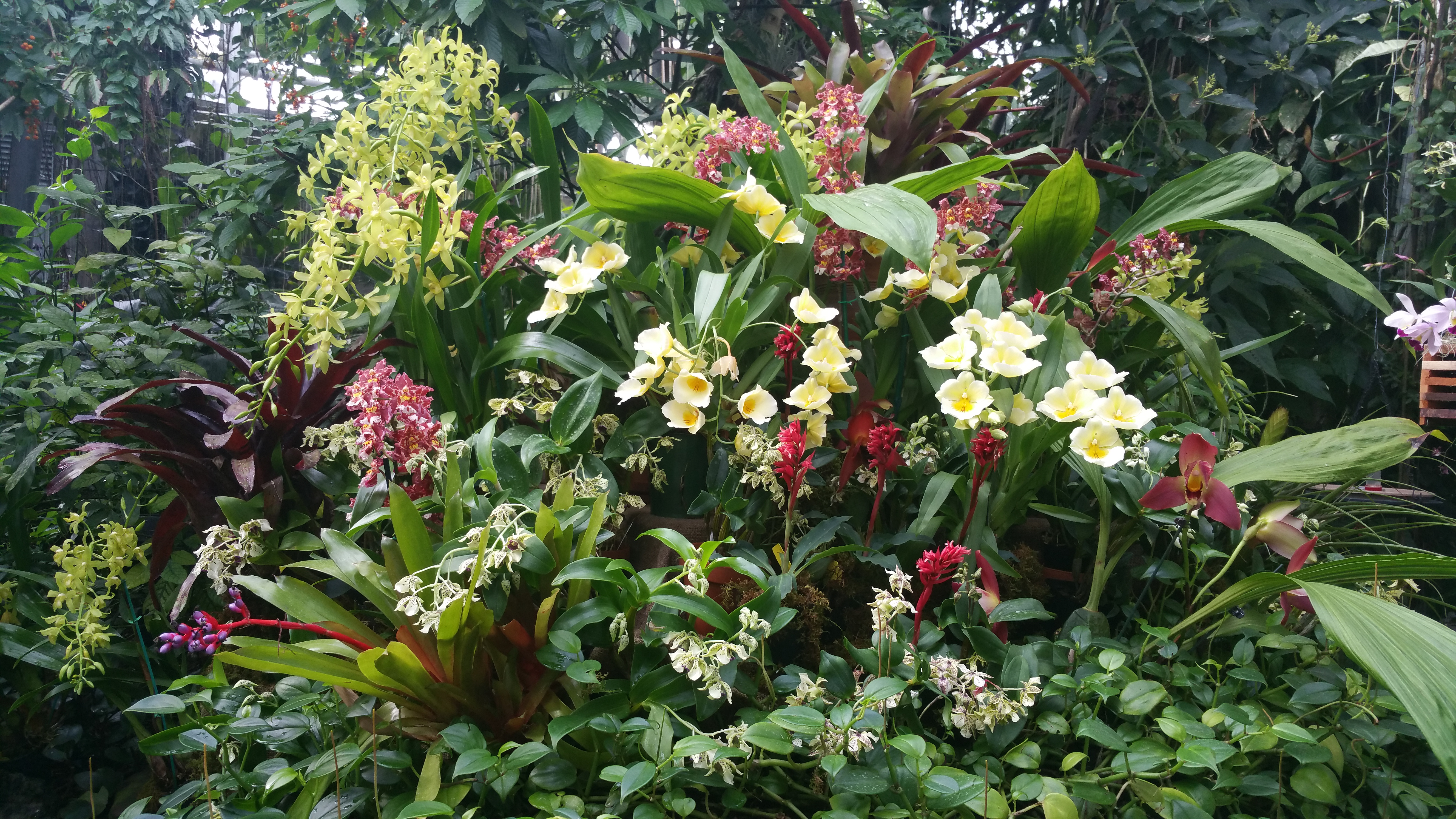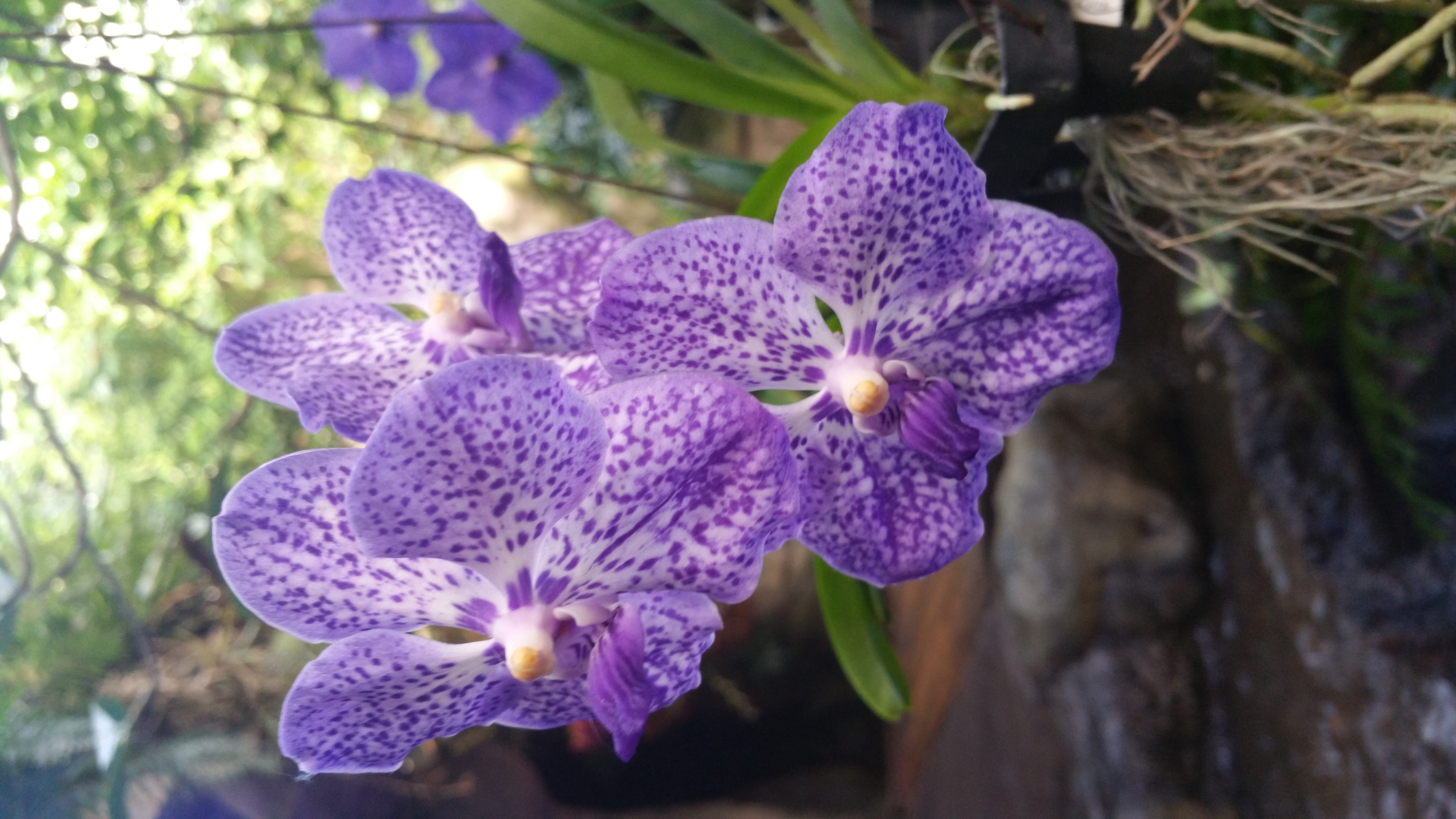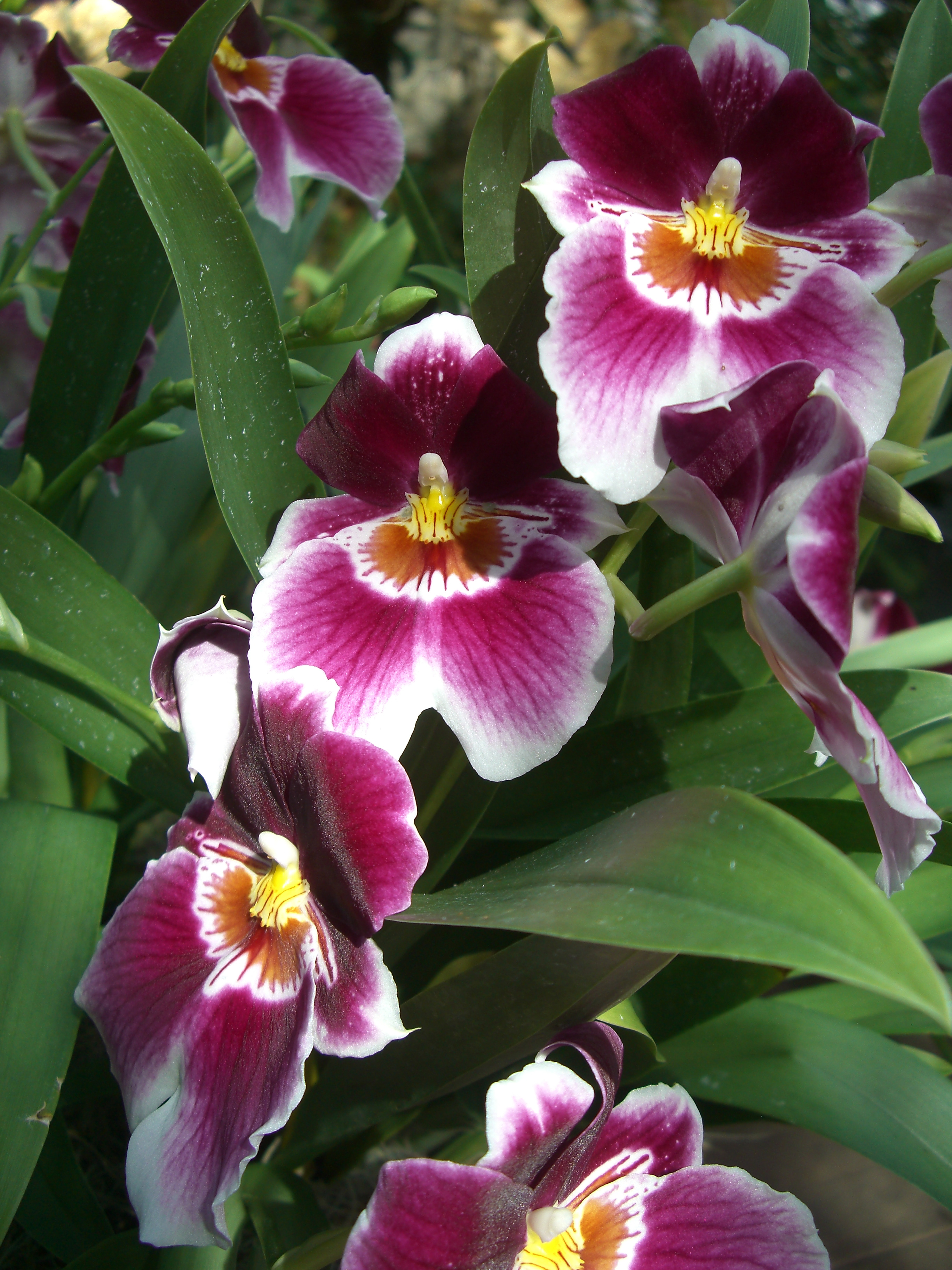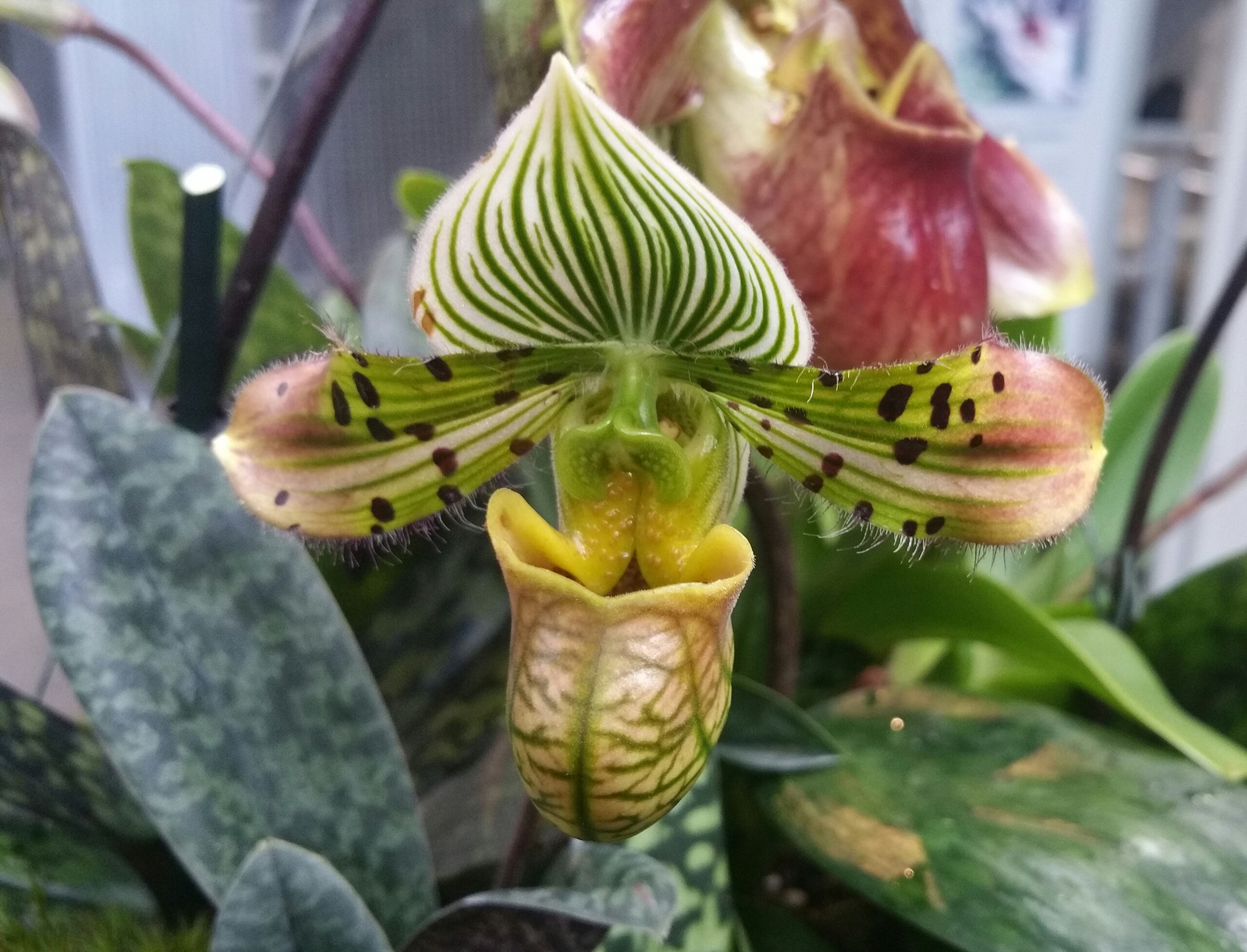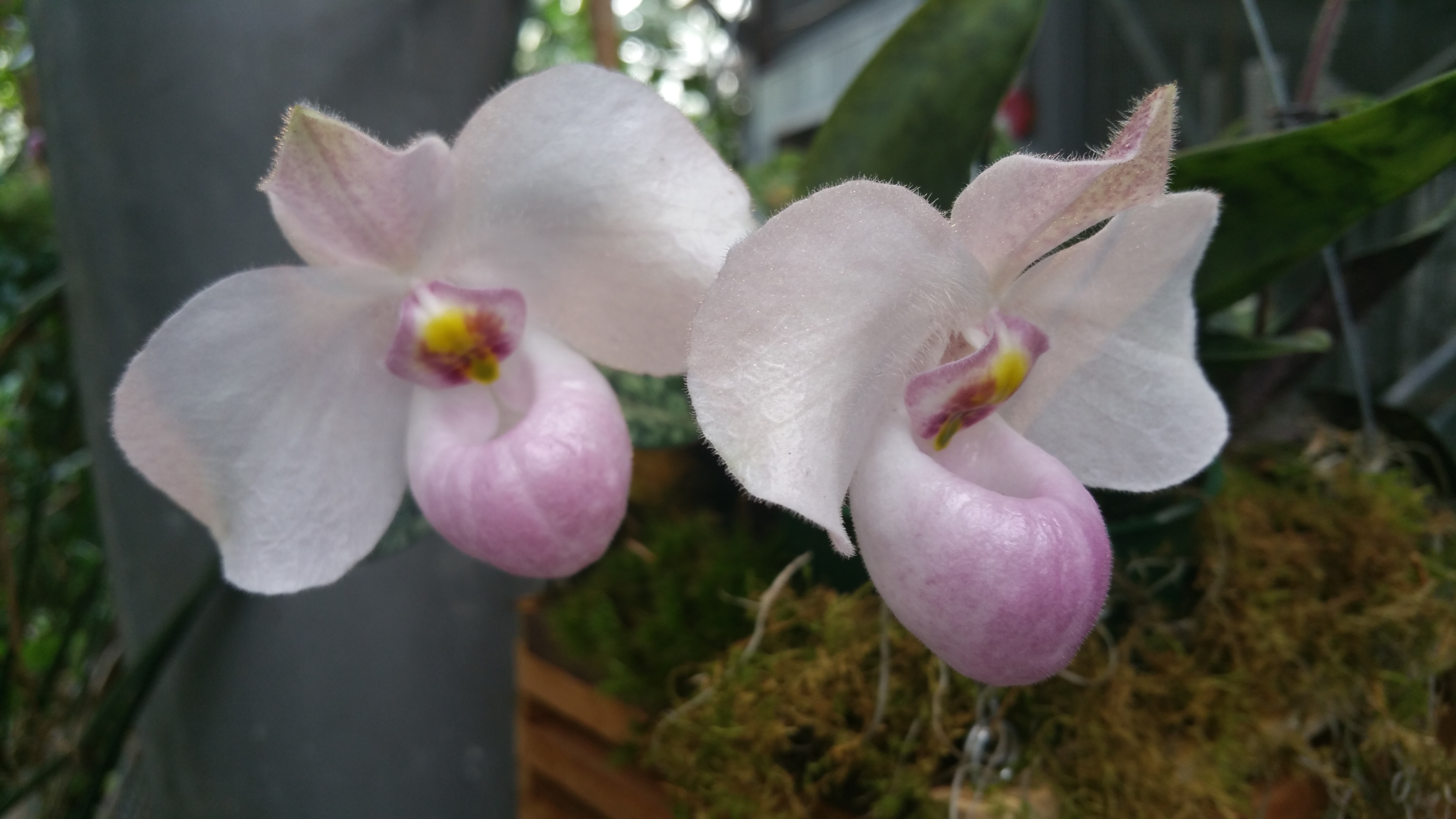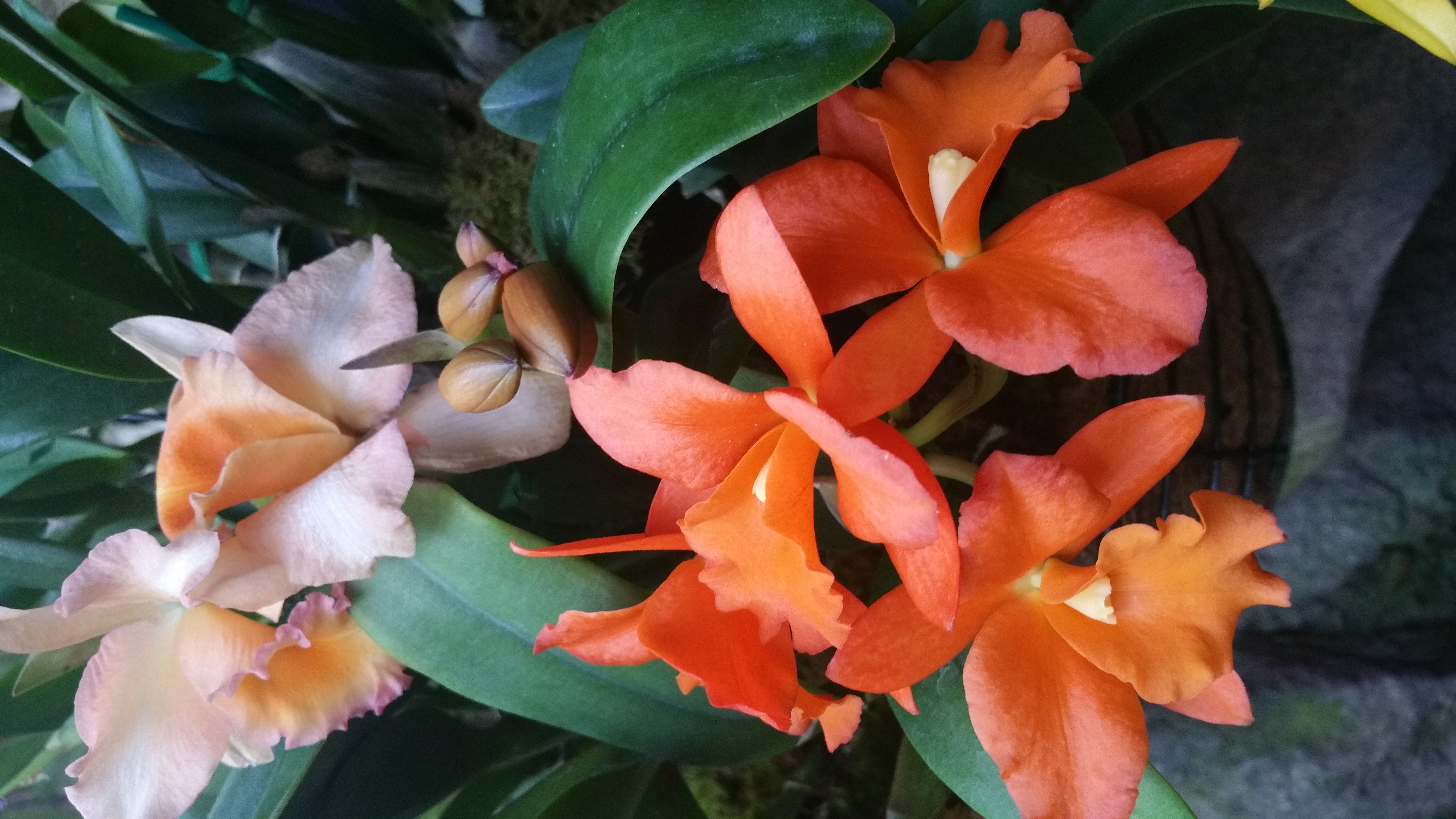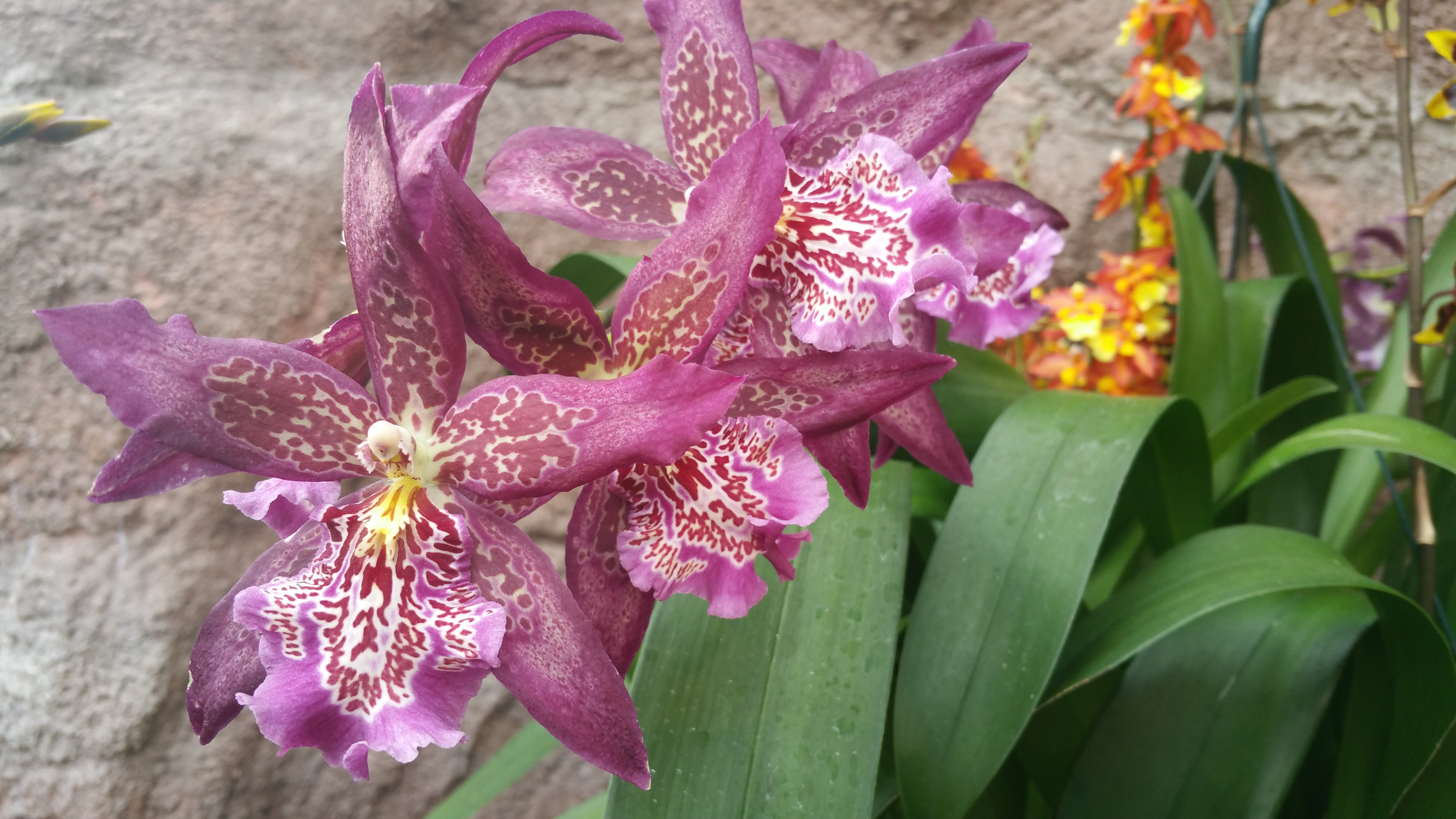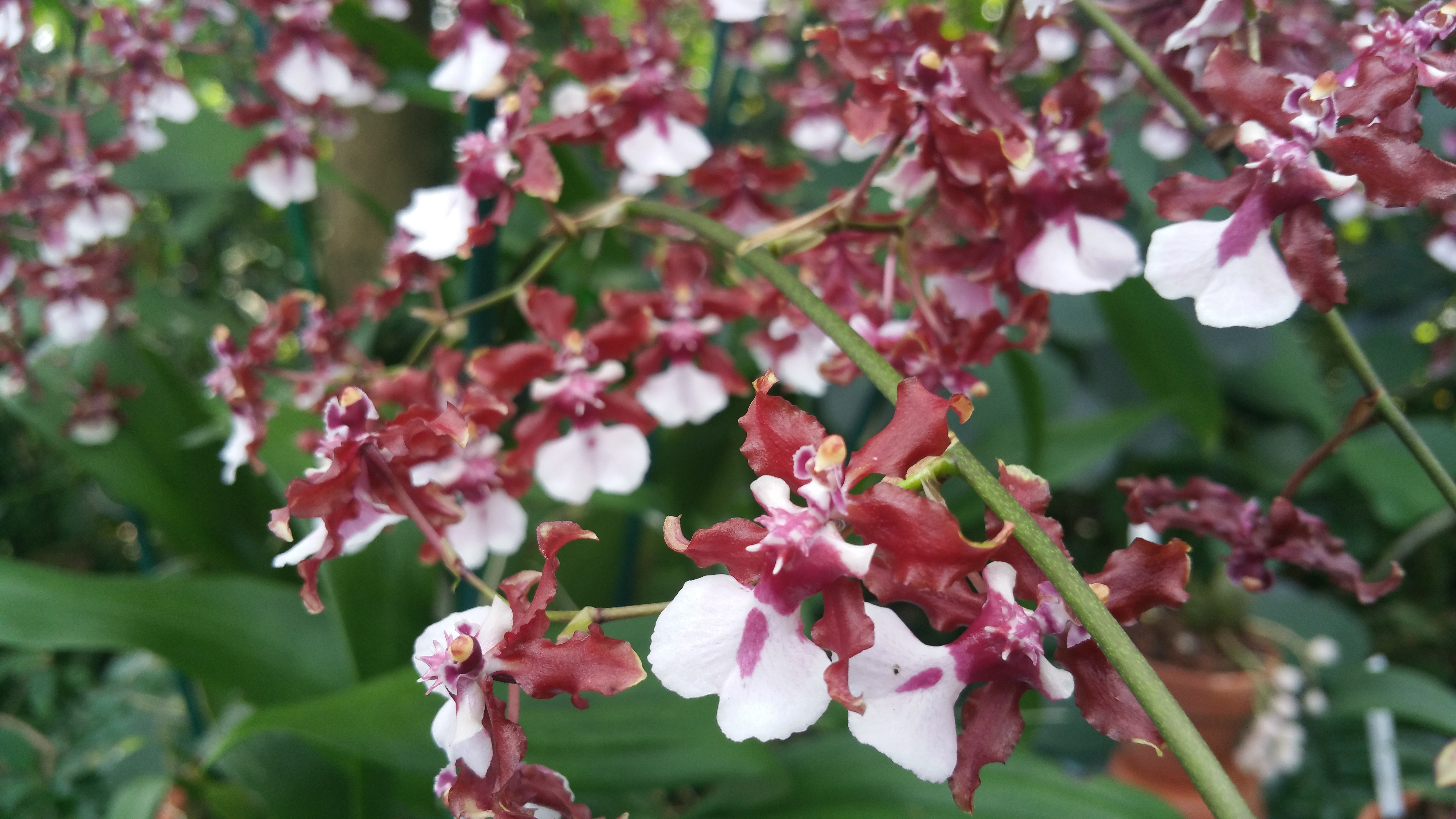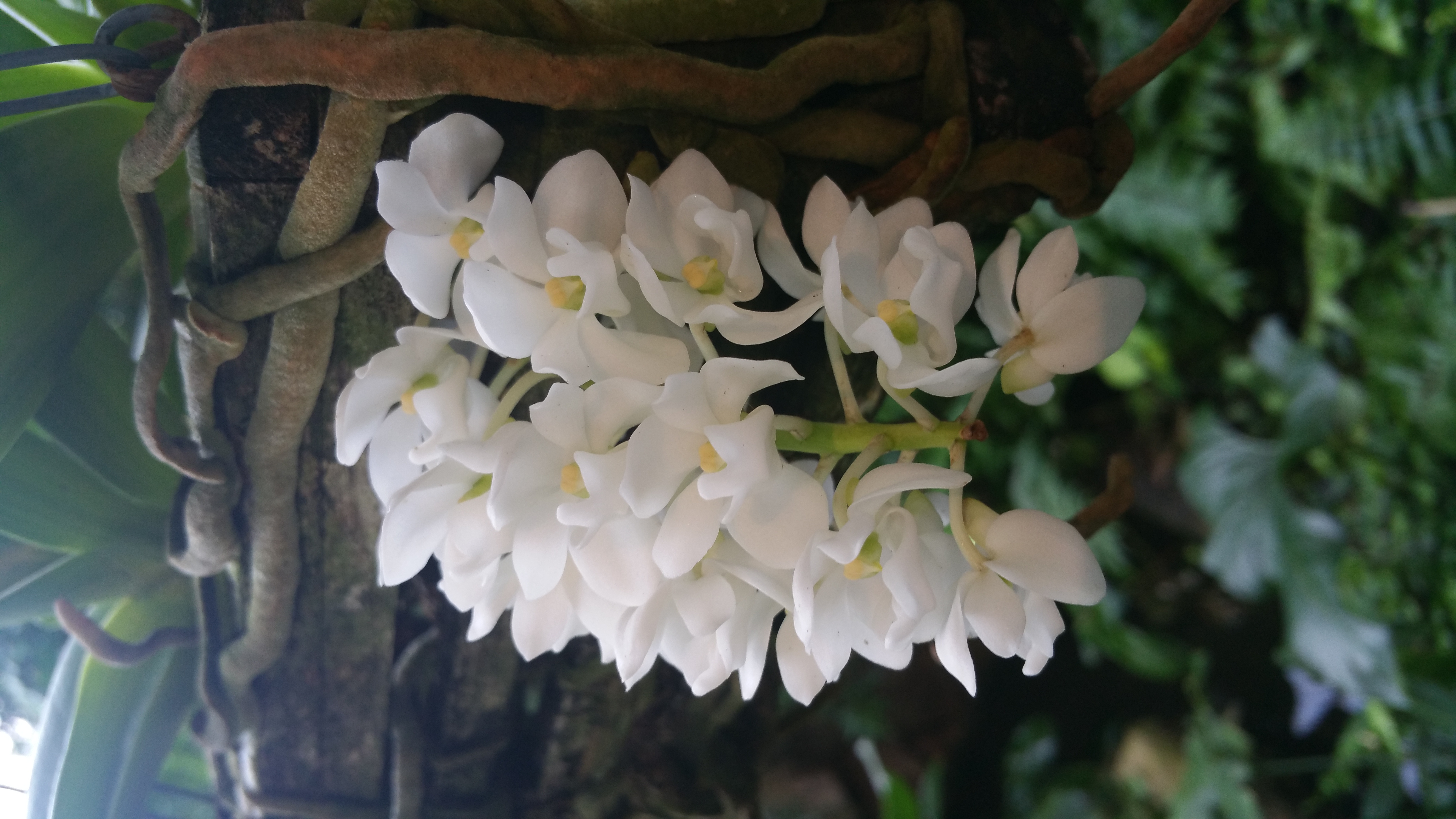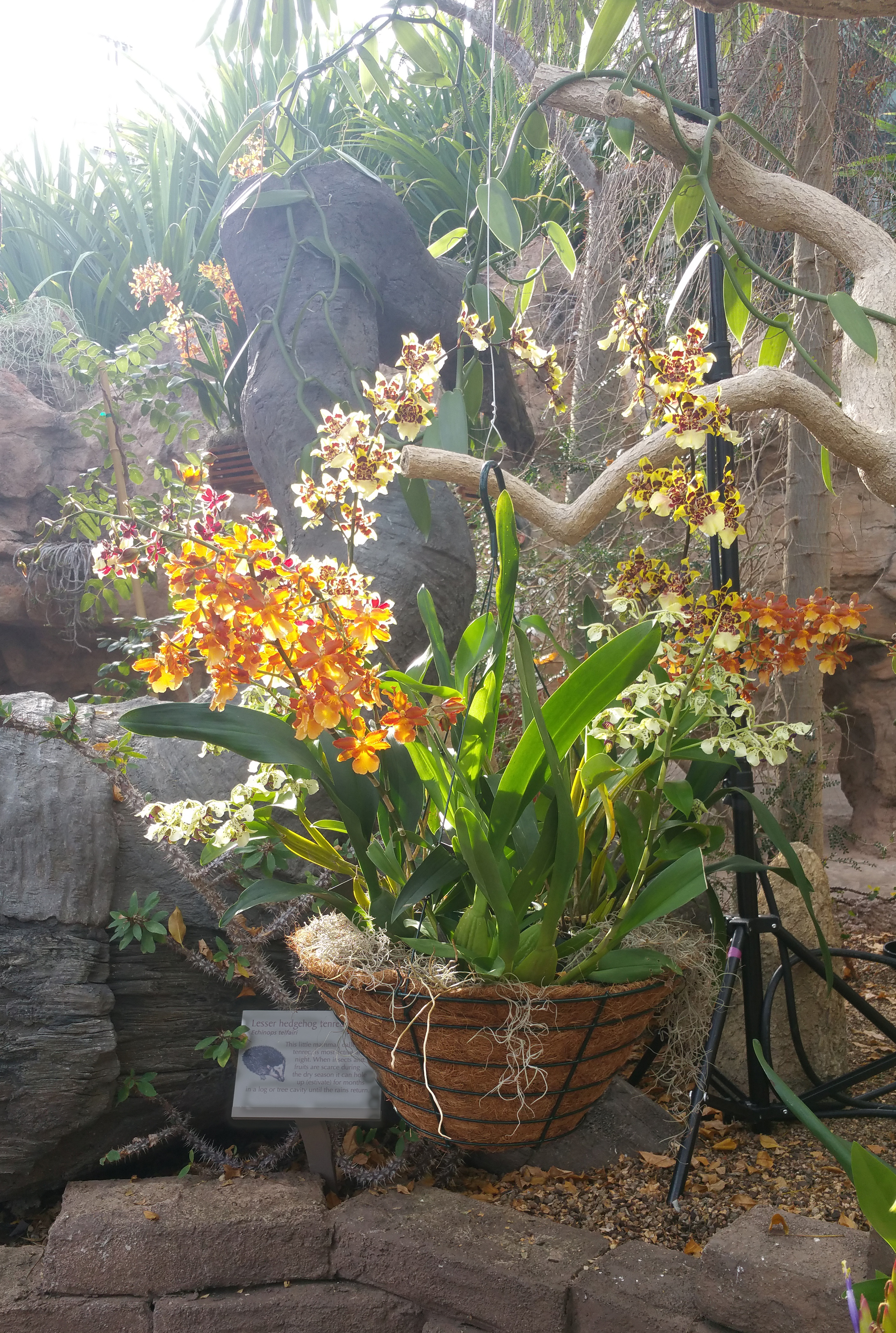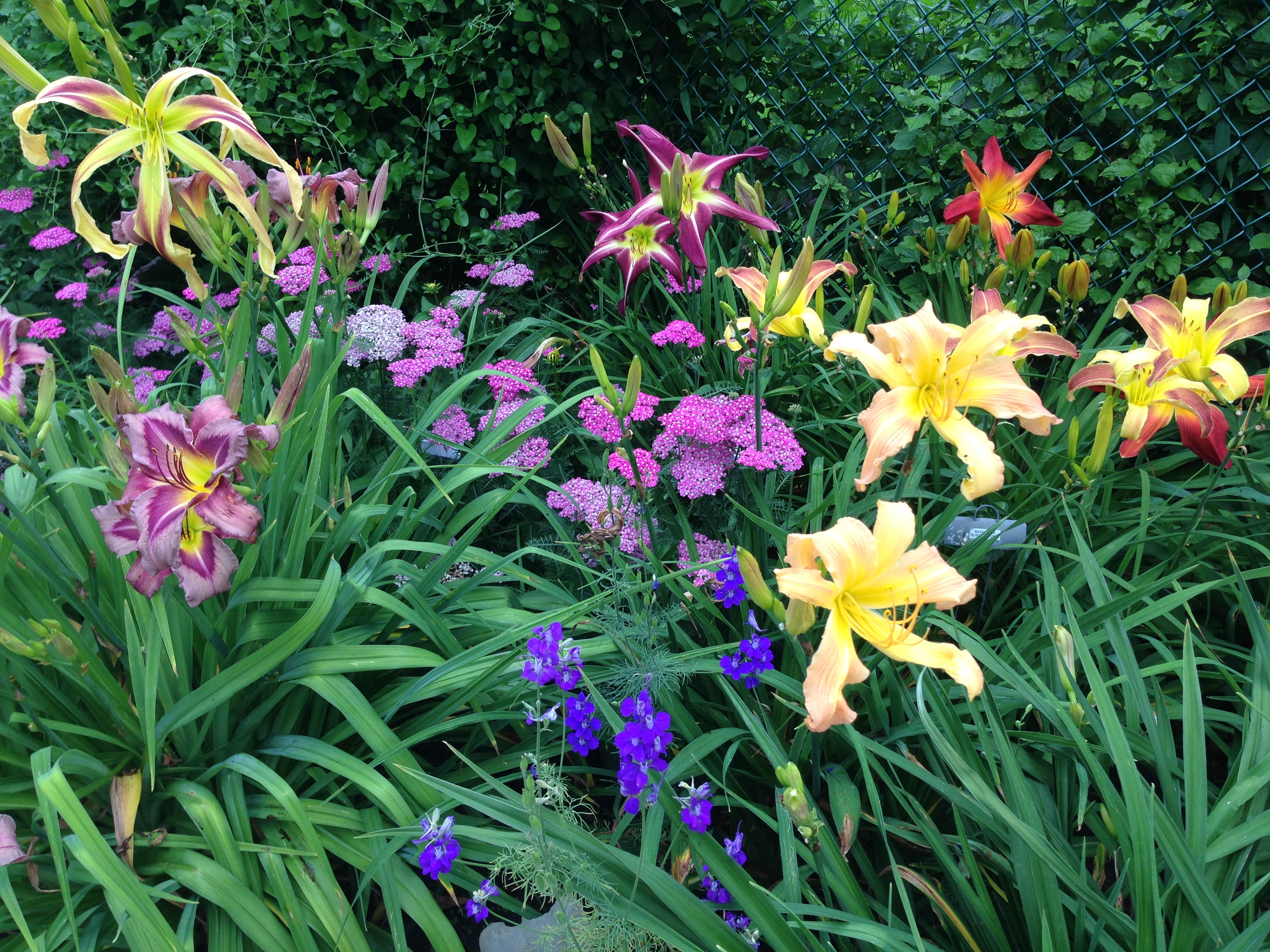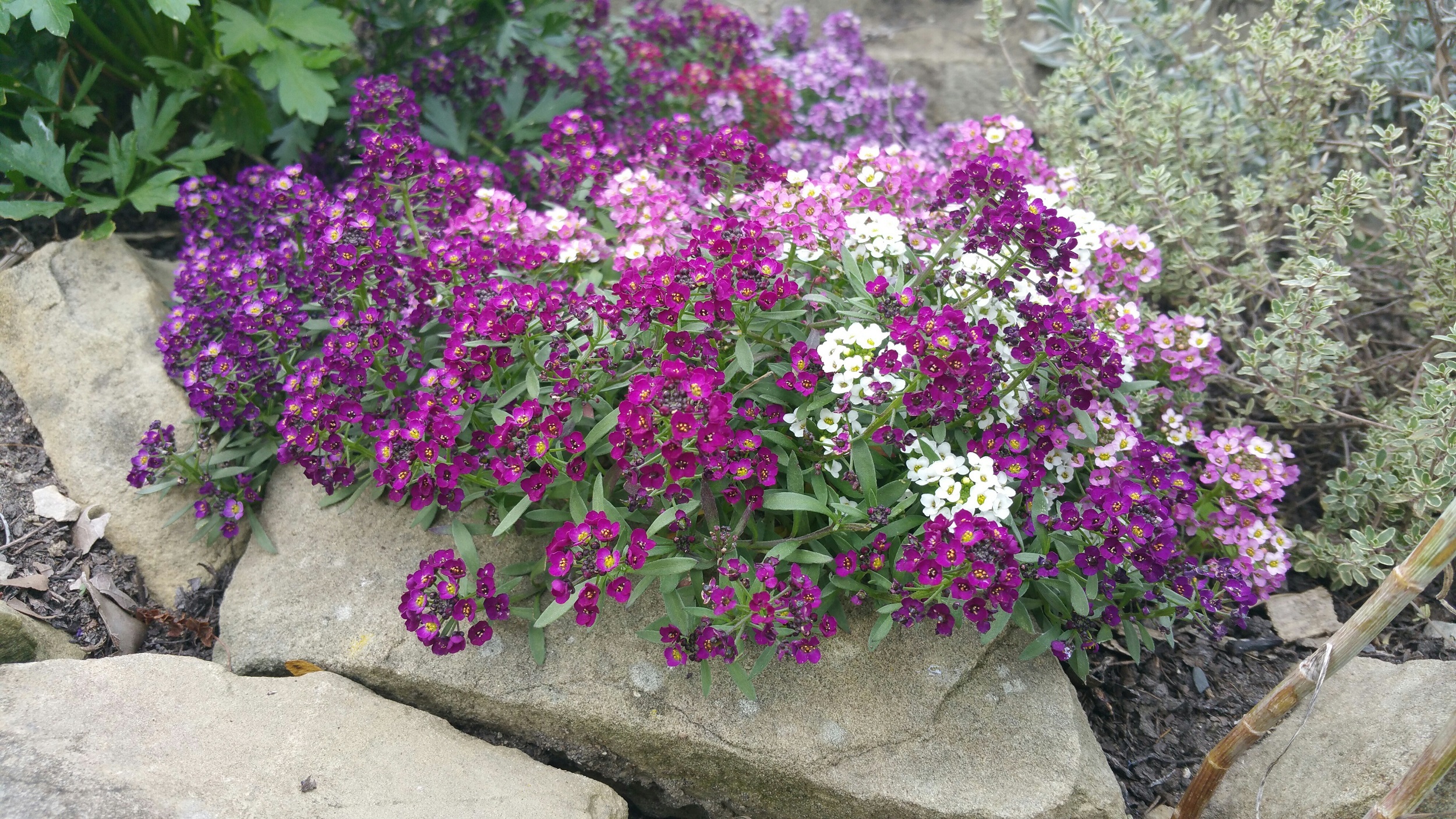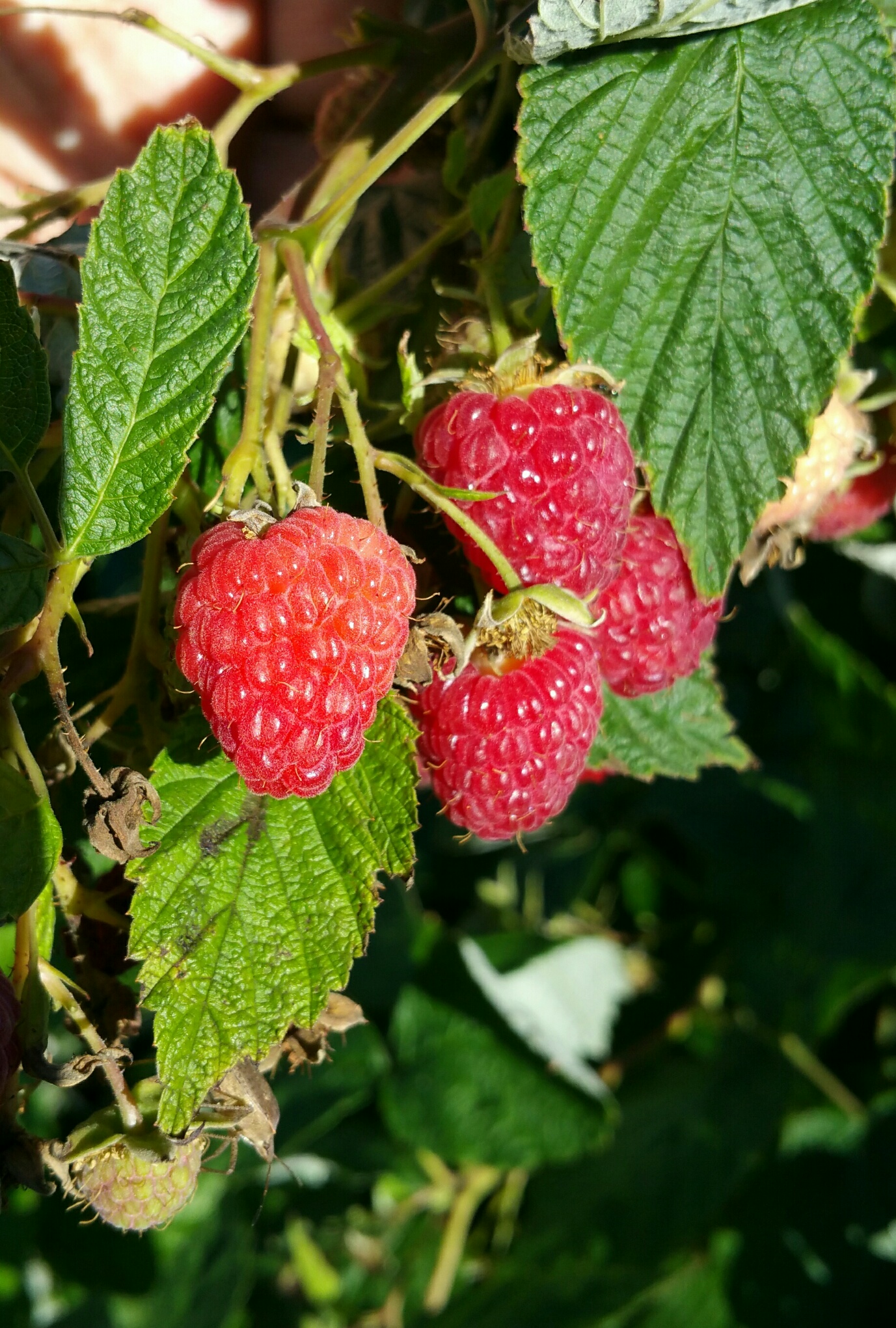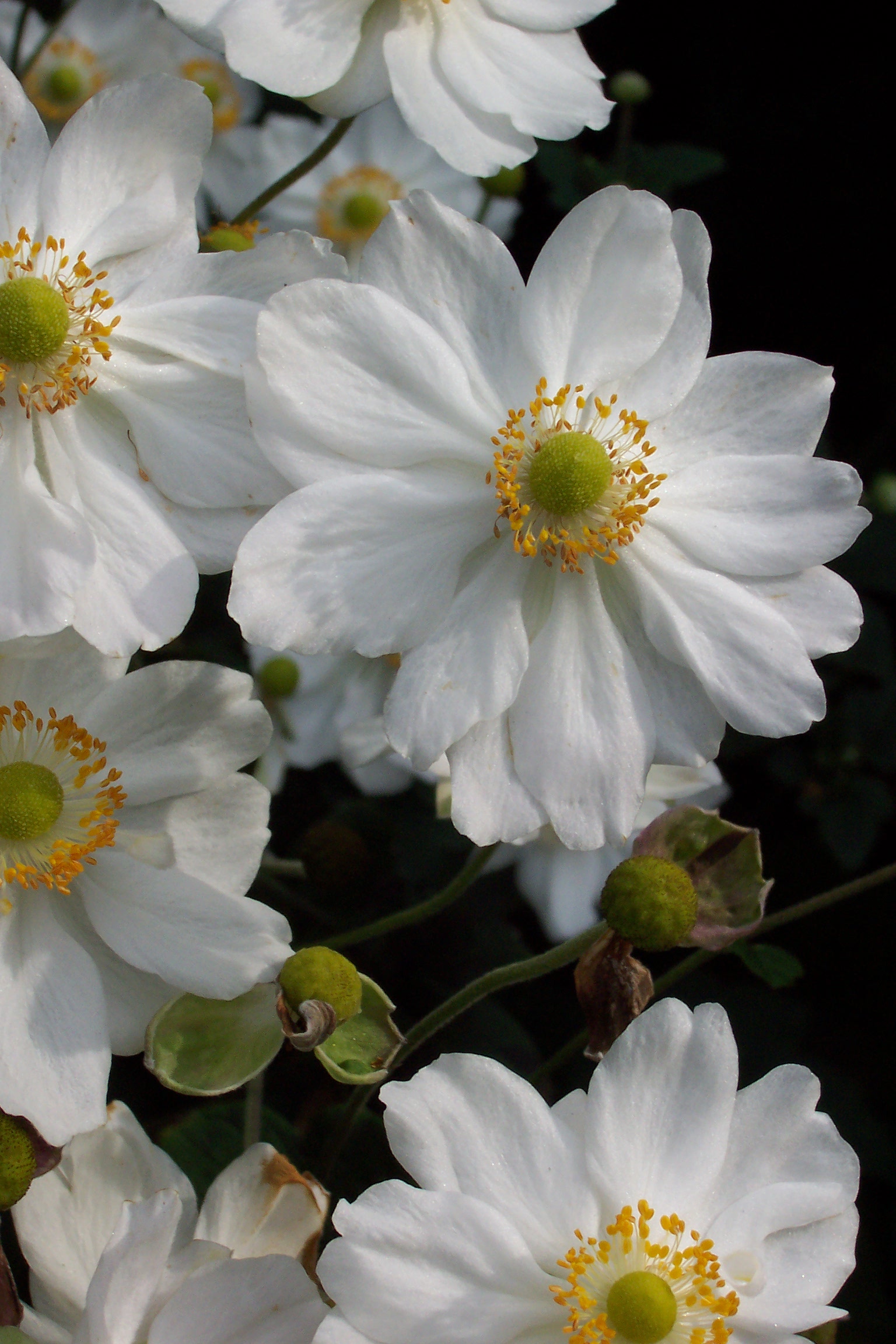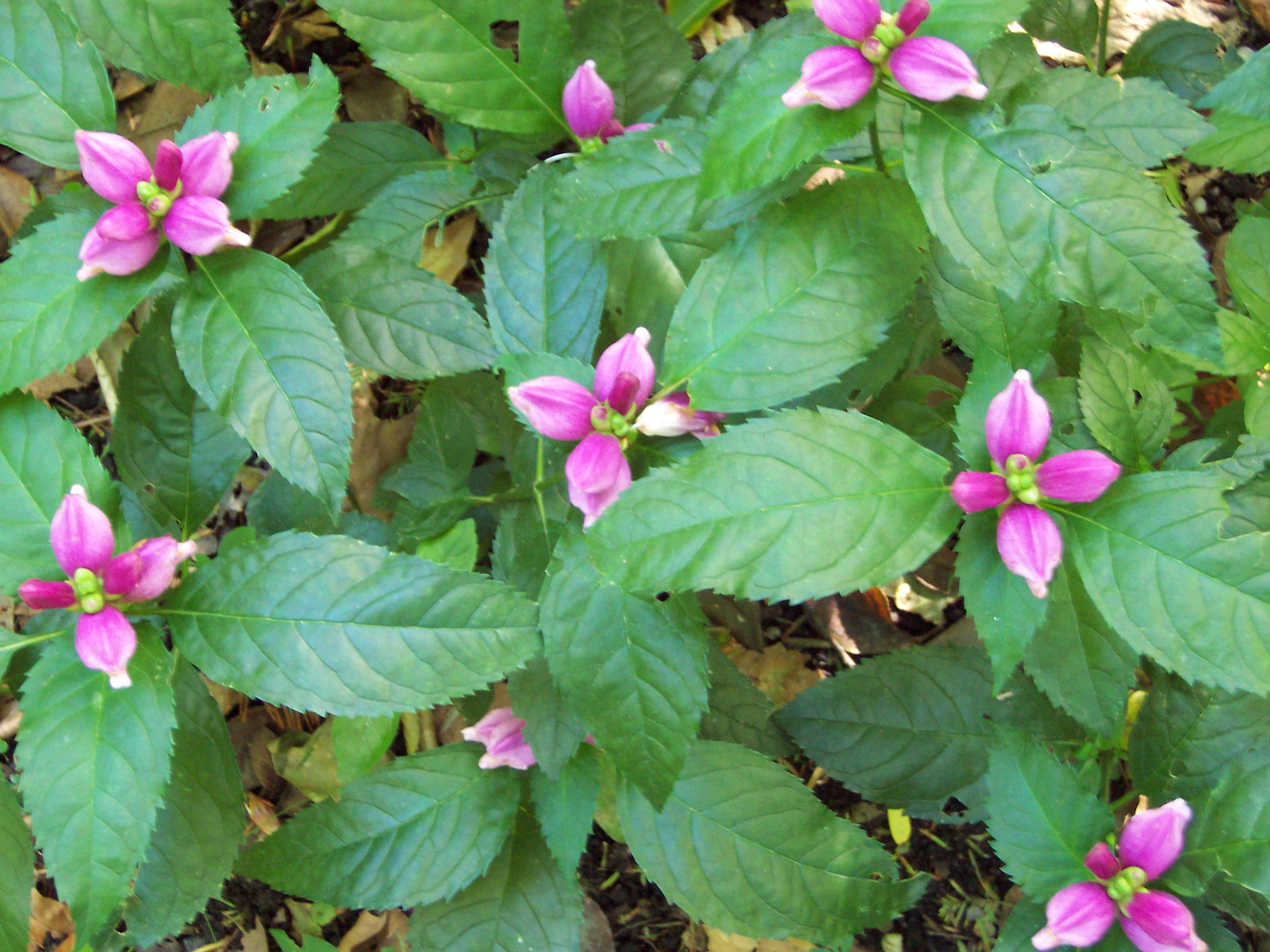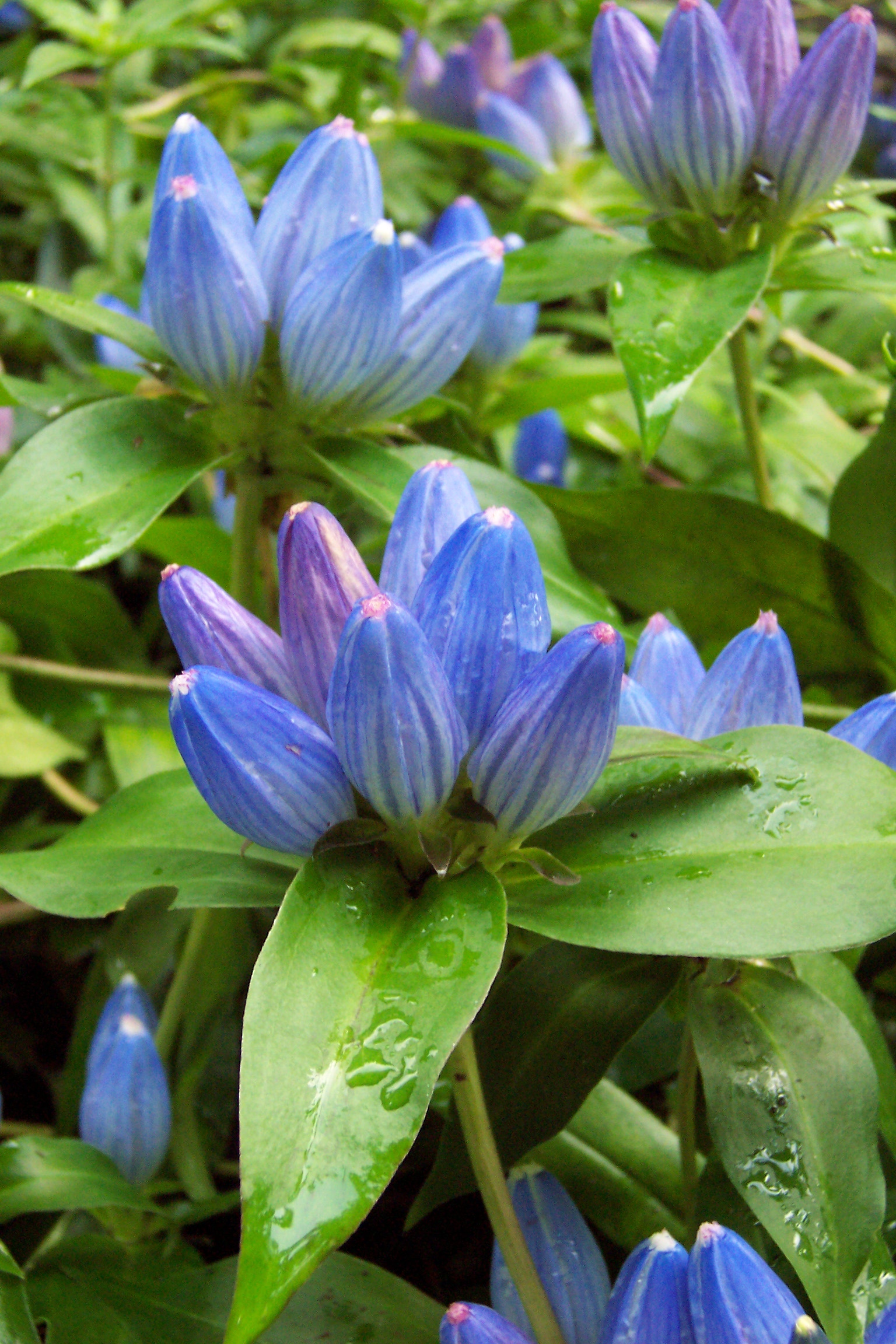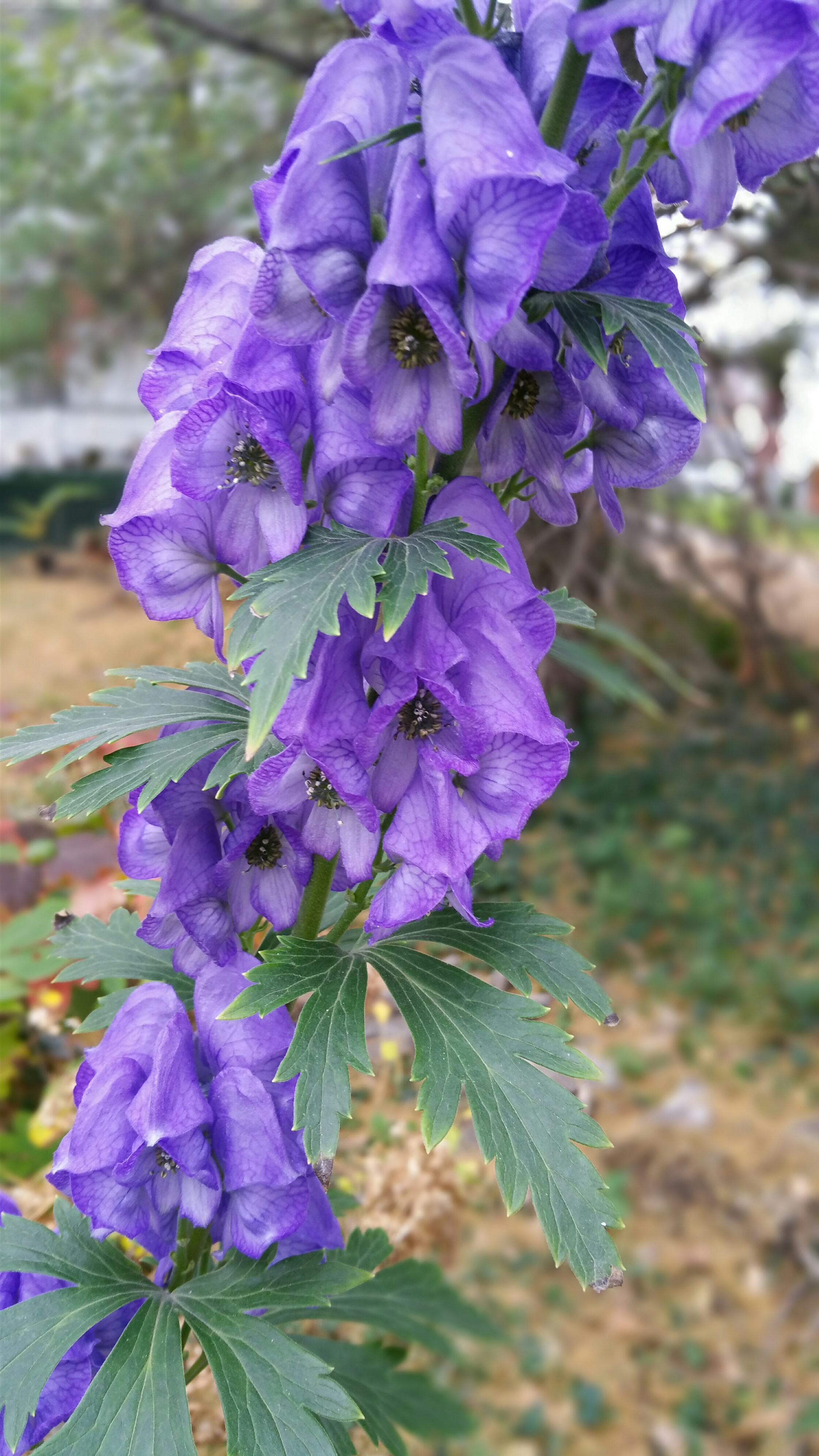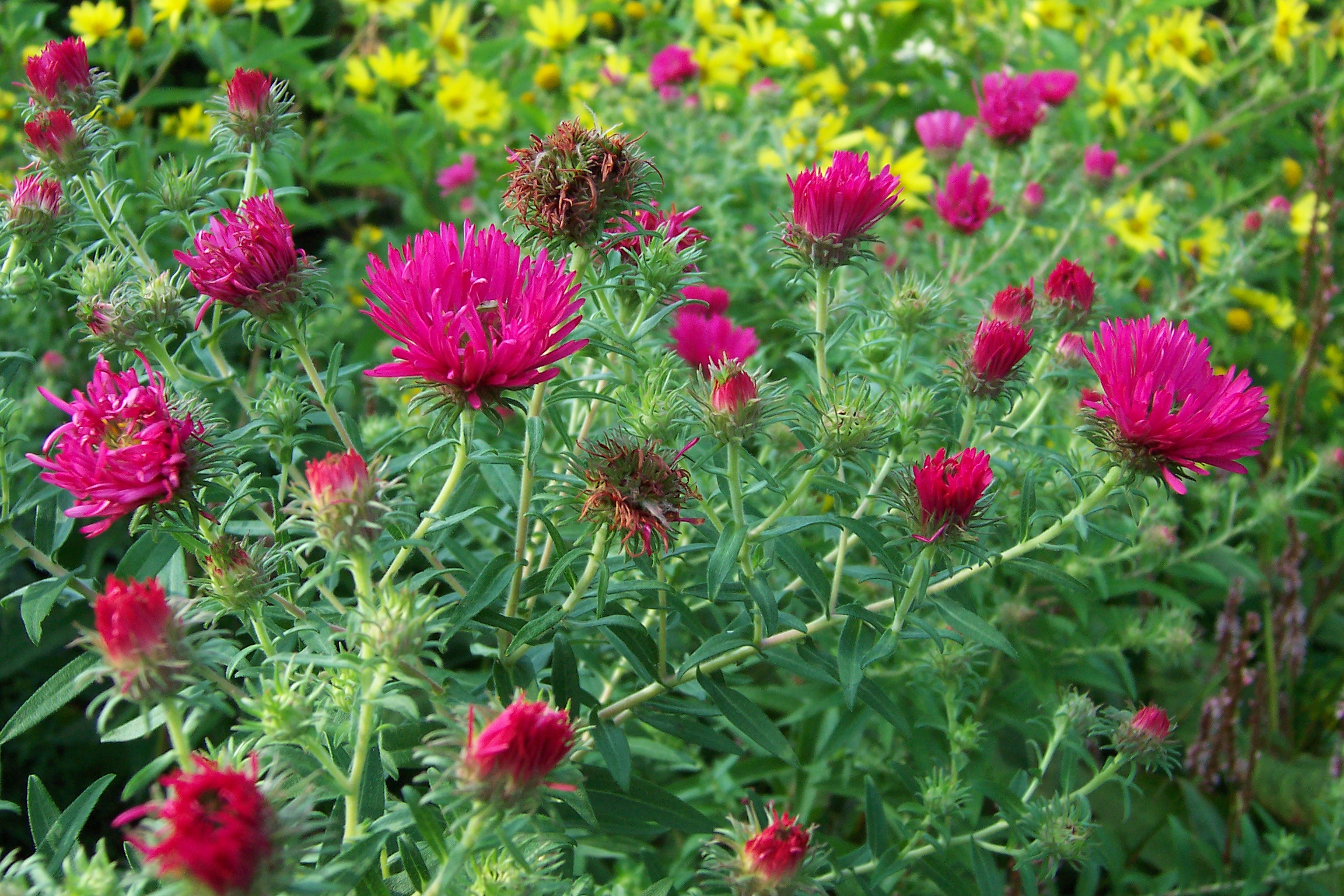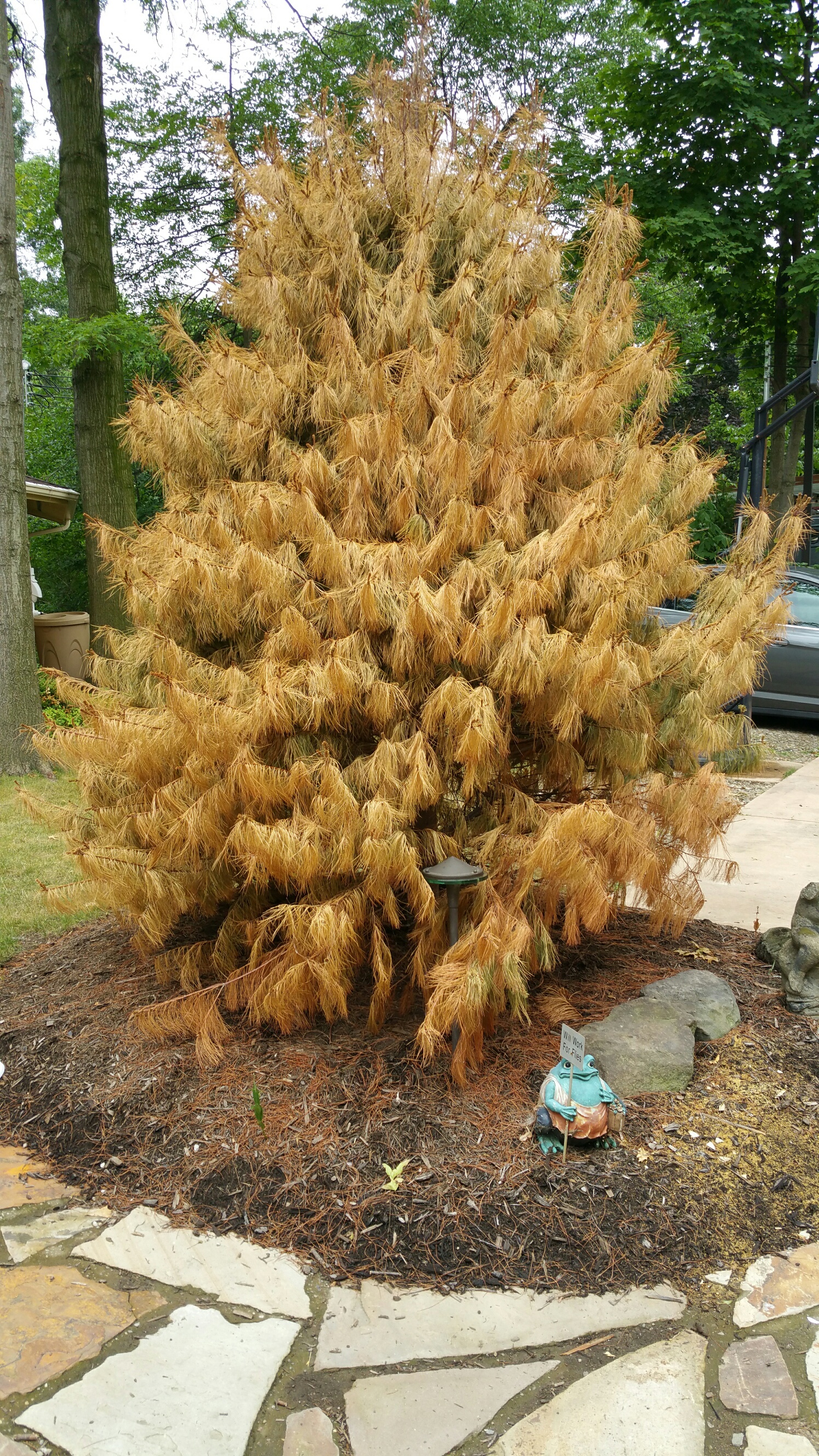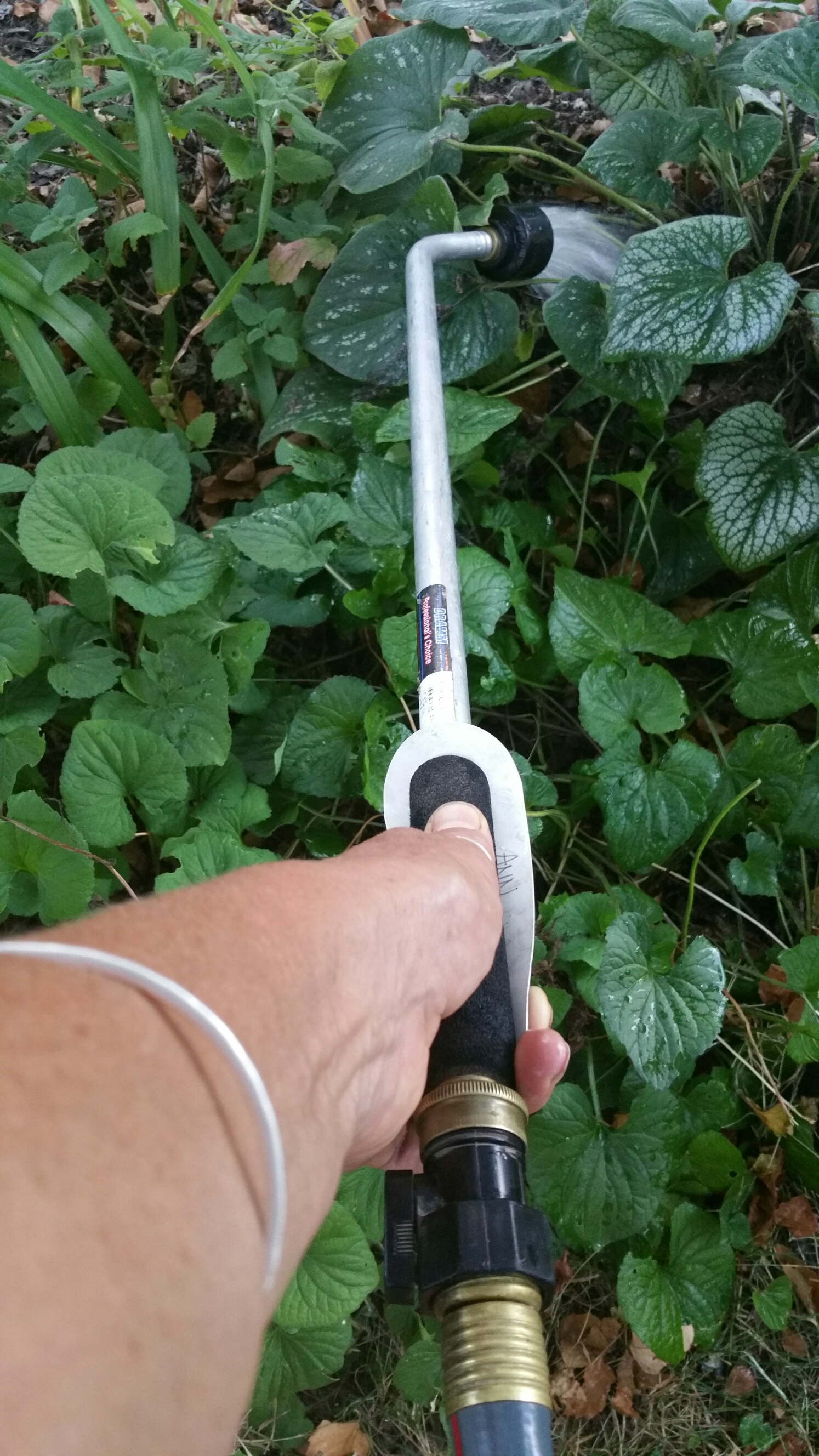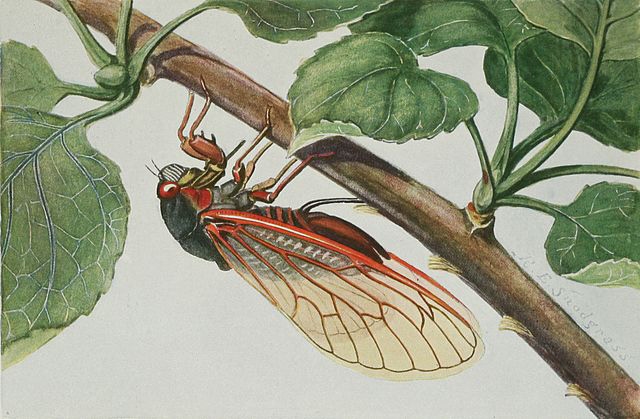by Ann McCulloh
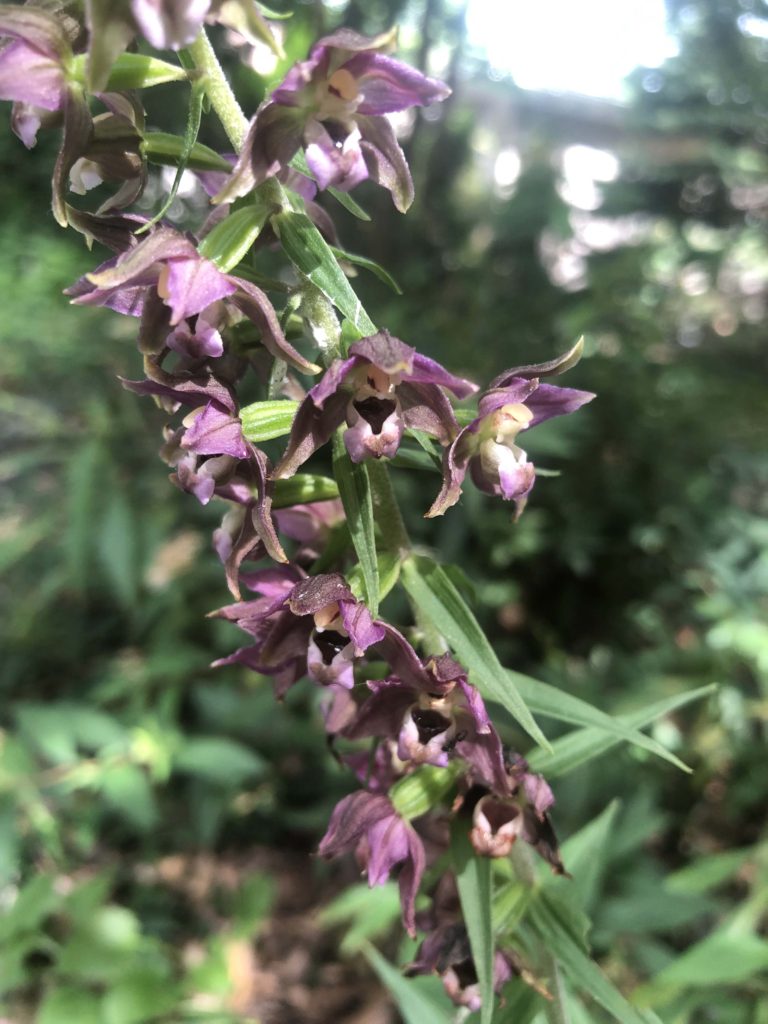
There are a bunch of weedy plants that people regularly ask me to identify, but one of the odder ones is the Broad-leaved Helleborine Orchid, aka Epipactis helleborine. It’s a European import that is incredibly hardy and tough. It often pops up in heavy, compacted soils near driveways and sidewalks. It’s very tenacious, coming back again and again after repeated weedings. Frustrated gardeners might be justified in naming it “Orchid from Hell.”
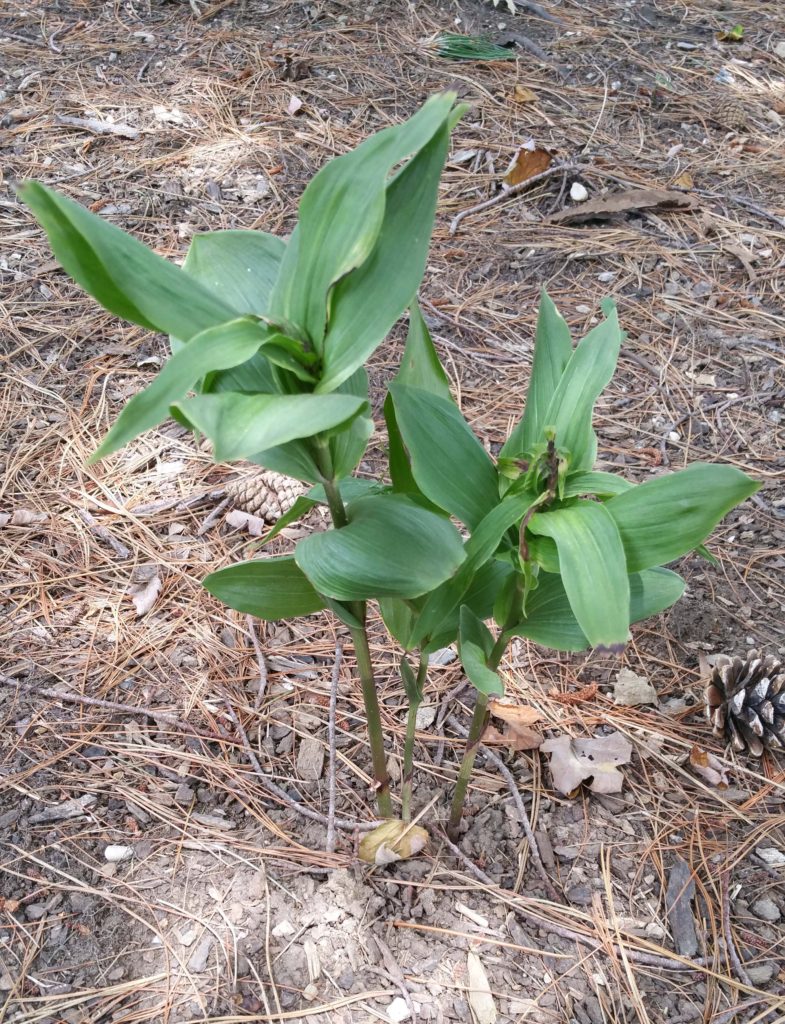
Orchids have a reputation for being exotic, rare or finicky. The opposite is true of many of them, especially when they are growing in conditions that are similar to their native habitat. Broadleaf Helleborine is widespread across much of Europe, Asia and northern Africa, so this thing is very adaptable! In North America, it is an introduced species and widely naturalized mostly in the Northeastern United States, eastern Canada and the Great Lakes Region.
Many orchids have strategies for getting pollinated and reproducing that seem almost devious if not deviant. This one is no exception. It entices several species of wasp to visit its flowers with intoxicating nectar. If no wasps show up after a few days, the flower can twist around and pollinate itself. Ideally, you have spotted it by then and cut the flowers for a kitchen table bouquet. (It is rather pretty in an understated way.)

If the flowers are pollinated, hundreds of tiny seeds result. Yes, that brownish haze on my palm in this photo contains many dozen Epipactis seeds.
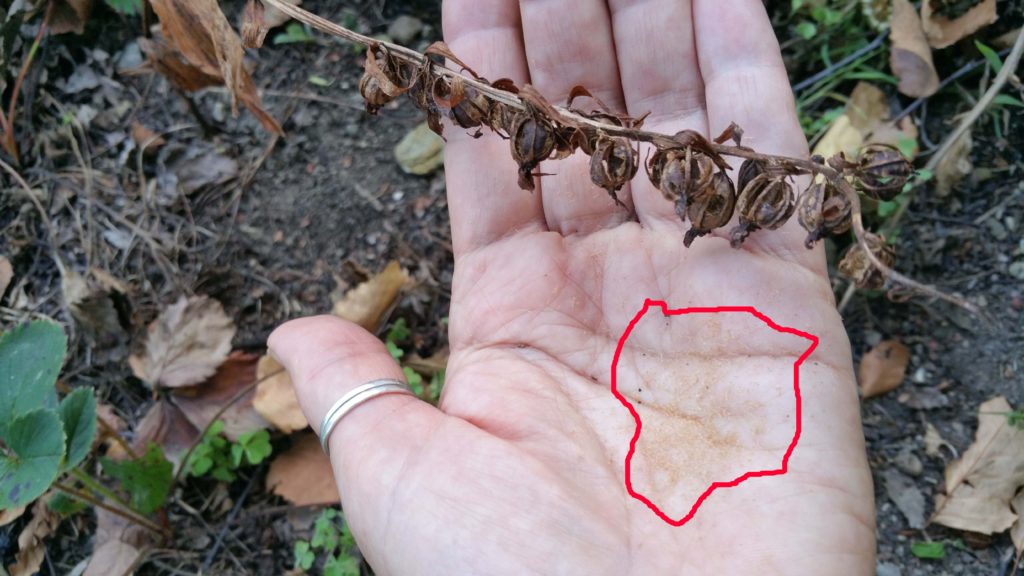
At which point the battle is basically lost for the season, since the dust like seeds are dispersed by any light breeze! Orchid seeds often require a partner to germinate, in the form of a specific soil fungus. In the case of Epipactis, most any one of a dozen different fungi will do. Once a seed germinates, it creates a radiating cluster of hardy but breakable roots about 6-8” deep in the soil. The roots have lots of little growing points that can create new shoots if they remain in the soil after the gardener’s industrious digging.
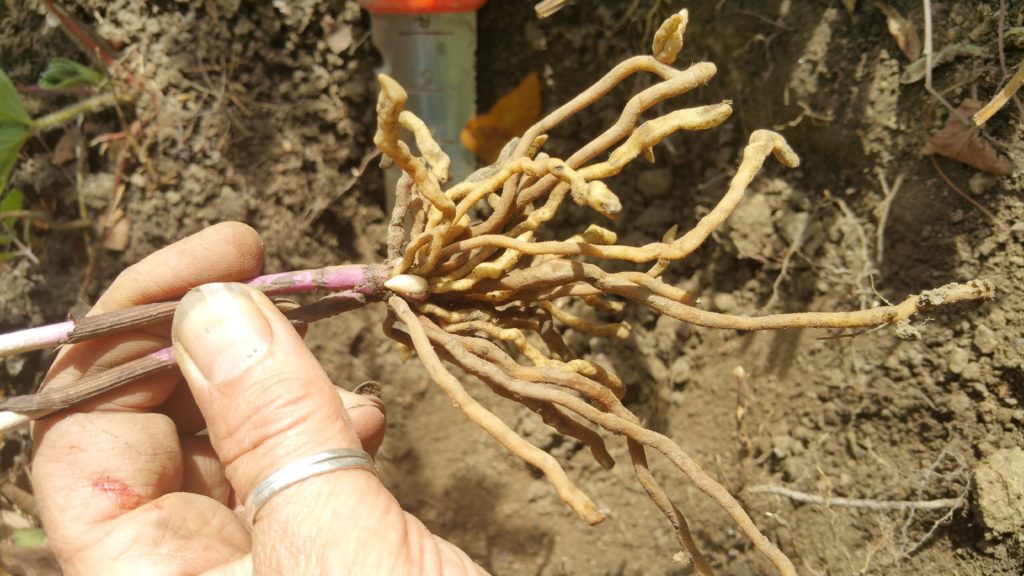
The recommended control methods are repeated pulling to exhaust the root, or deep and thorough digging. Herbicide sprays can work, but take several applications, with mixed success. Thank goodness this orchid pest is rarely so prolific as to threaten or outcompete desirable plants! In Northeast Ohio gardens its mostly a perennial annoyance, but it probably has a negative impact on native landscapes. Epipactis helleborine has been declared invasive in Wisconsin, where Door County has seen significant populations. Best to eradicate or at least control the spread of this diabolically persistent little orchid!
